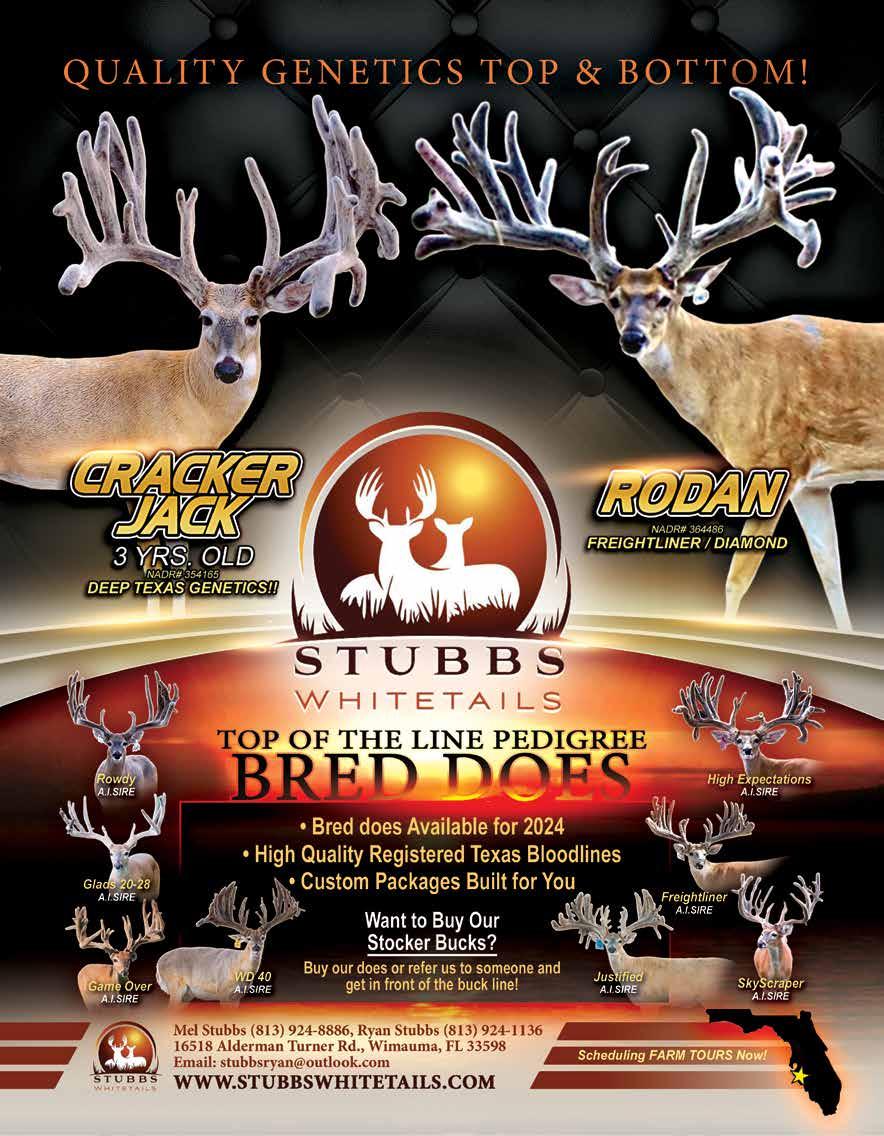
CERVIDAE HEALTH RESEARCH INITIATIVE (CHERI)
Guiding Informed Decisions
Sponsored by SETDA
FUNNIEST DEER NAMES
Shared Stories from Fellow Deer Farmers
Sponsored by SETDA
TO CUT... OR NOT TO CUT
Sponsored by SETDA

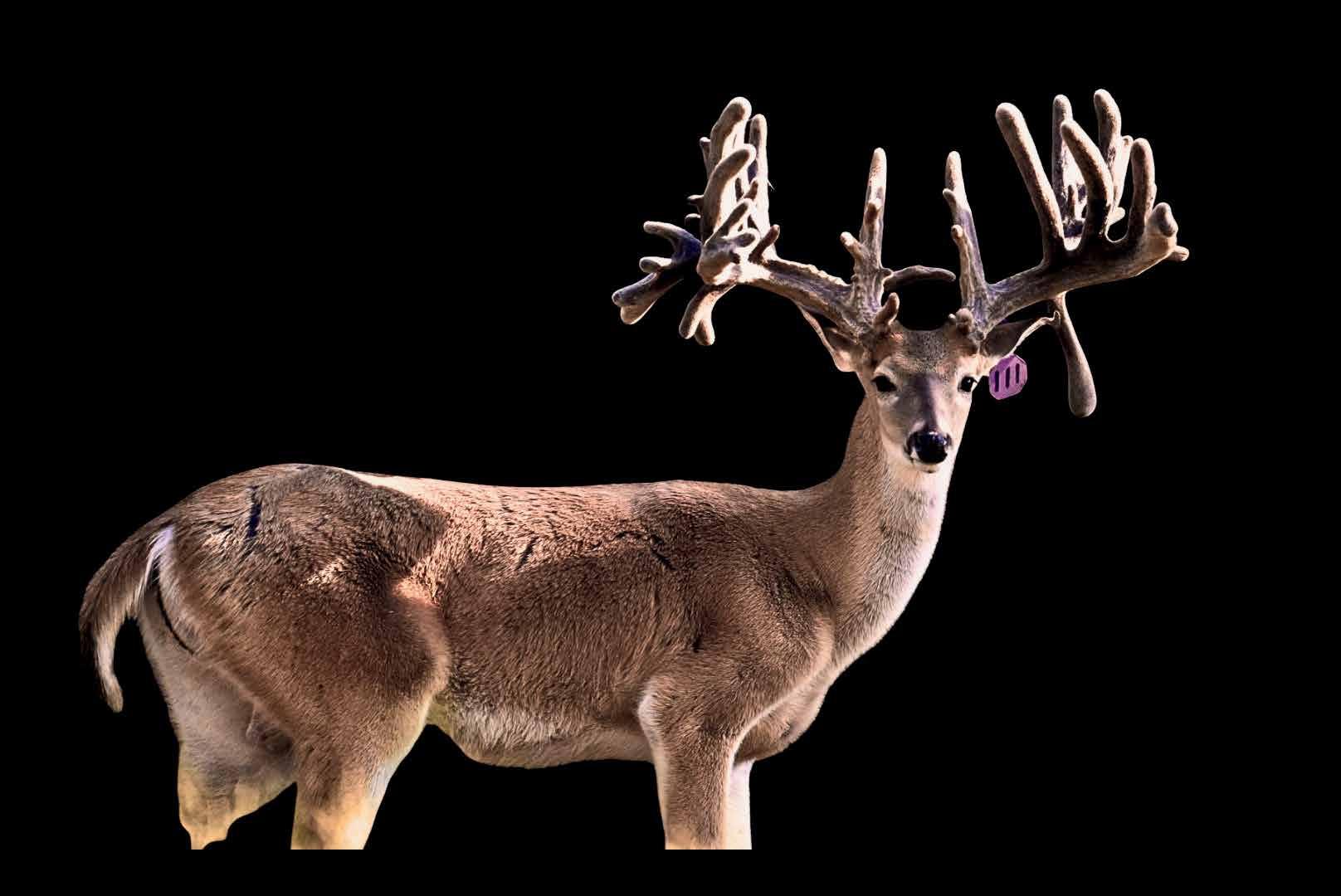





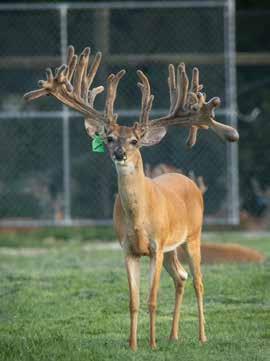


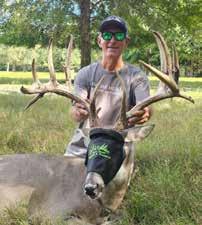
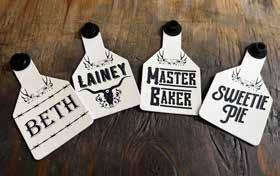



CERVIDAE HEALTH RESEARCH INITIATIVE (CHERI)
Guiding Informed Decisions
Sponsored by SETDA
FUNNIEST DEER NAMES
Shared Stories from Fellow Deer Farmers
Sponsored by SETDA
TO CUT... OR NOT TO CUT
Sponsored by SETDA














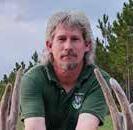



561-373-2353 Bleffler2011@gmail.com
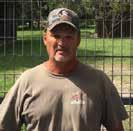




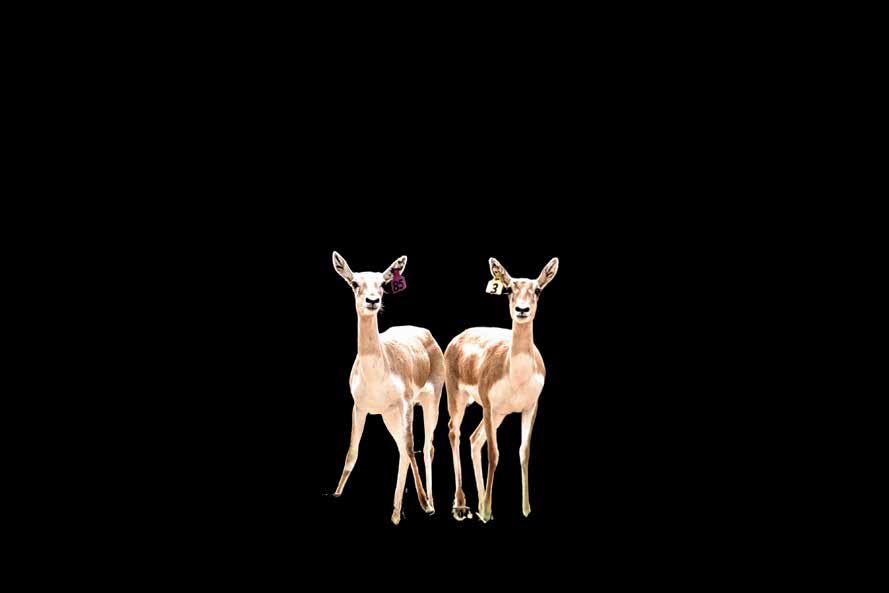
Flynn Farms is home to a new premier herd of Blackbucks, led by our standout male, Louie V, and backed by elite genetics from sires like Prodigy, Phenom, Twister, and Rolex. With nine carefully selected does and a successful first fawning season producing six healthy fawns, we’re proud to be building a strong foundation for the future of exceptional Blackbuck breeding.
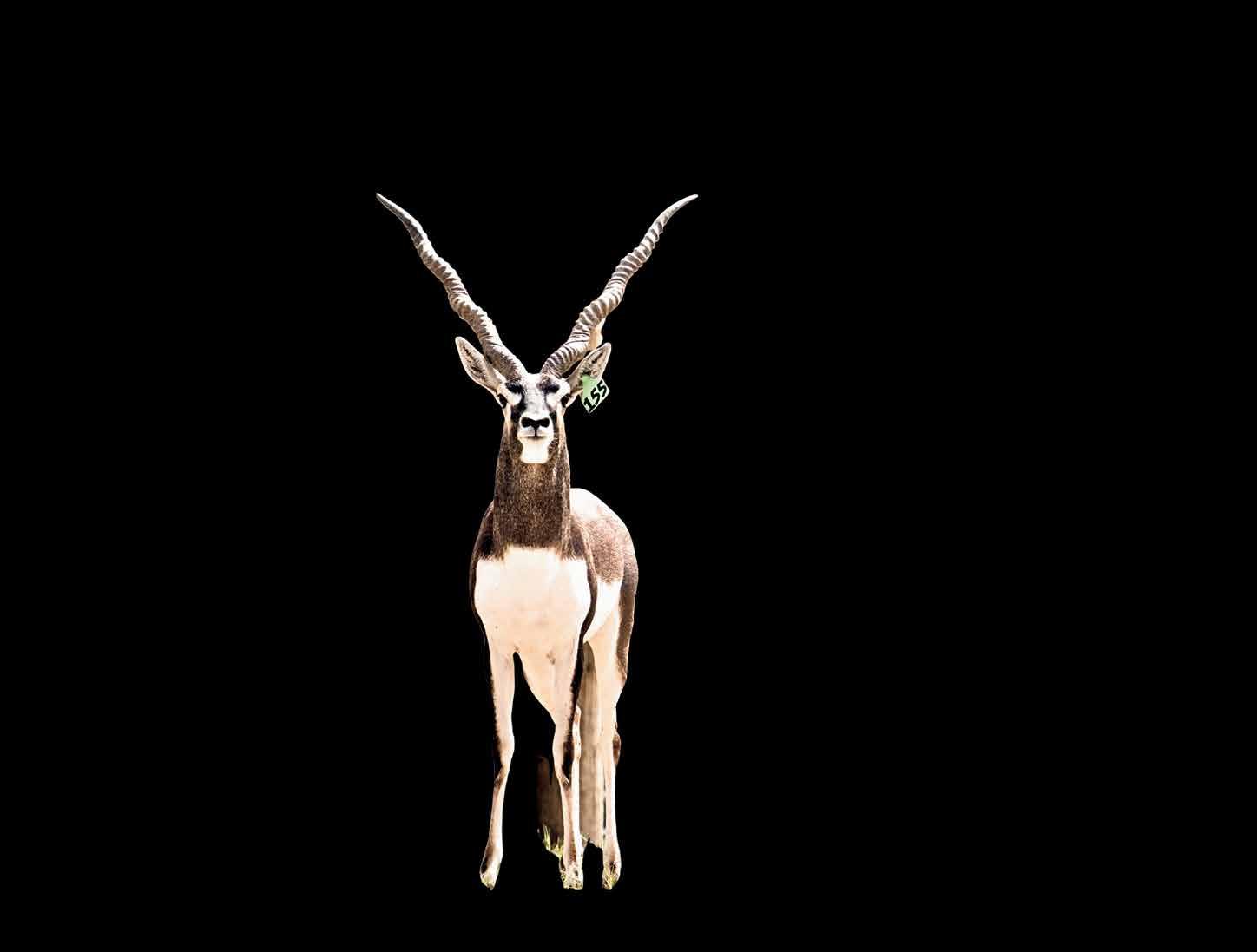

Winter 2025

It’s that time of year once again, where we see the fruits of our labor. Our fawns are weaned and does are ready for breeding. Our bucks are big, beautiful, hard horned, and now dangerous to each other and ourselves. Those that have not already been sold as stockers should have their temperament greatly improved or their antlers removed. In this issue you will read an article, To Cut or Not To Cut, and make your own opinion.
It’s also that time of year when deer farmers’ plans for the future are put into action. You can’t change or improve the genetics standing on your farm unless you buy different deer, embryos, or semen. Regardless if you intend to Al or live breed, try to relax, take a deep breath, and remember it’s in God’s hands.
In part 7 of the series, The Truth About CWD, you will read about the second case of CWD being confirmed in Florida and part of my discussion with Steve Padgett who owns a preserve in the “quarantine zone”. I was only too happy to send him all the information I could about CWD so that he was fully prepared for a meeting with FWC.
This year’s Summer Picnic held at the Austin Carey Learning Center was again a huge success. SETDA’s primary goal for the event as always was to help educate deer farmers., and boy did we. Thanks to the help of Dr. Diane Kitchens with FDACS, Ken Holmes with FWC, and the incredible team from CHeRI. The great folks at CHeRI were kind and allowed me to use their data and slides for a presentation that I gave at Pennsylvania’s Deer Fundraising Auction in September. I was asked to be a speaker and help educate our northern friends about hemorrhagic diseases. The timing was unfortunately a few months too late as many states were being ravished by EHD and BTV with heartbreaking losses.
Our Spring Fling Fundraising Auction will once again be held at the Double Tree Hilton by the Orlando airport. You will find information about it, including room discounts, and how you and others can market your deer and products. Members from SETDA’s board of directors will be reaching out to assist you with this and ask for your support. We look forward to seeing everyone there.
Let me introduce you to the newest members of SETDA’s BOD:
Michael “Andrew” Owens, with Whitetail Country Plantation in Live Oak, Florida
Blaine Flynn, with Flynn Farms in Milton, Florida
As always, myself, and your board are here to serve you. Please reach out with any questions or concerns. We will be having announcing the date of the annual meeting to be held prior to January 15th to elect new board members whose term is expiring. Voting members should look forward to receiving a ballot to either be sent by mail or electronically after January 1st. Those interested in being on the board of directors, will find the application form inside, which must be turned in before the ballots are sent out.
I want to wish everyone in advance, a Happy Thanksgiving, Merry Christmas, and Happy New Year!
As always, stay Florida Strong and Safe,
Sincerely,
Dr. Bill Leffler
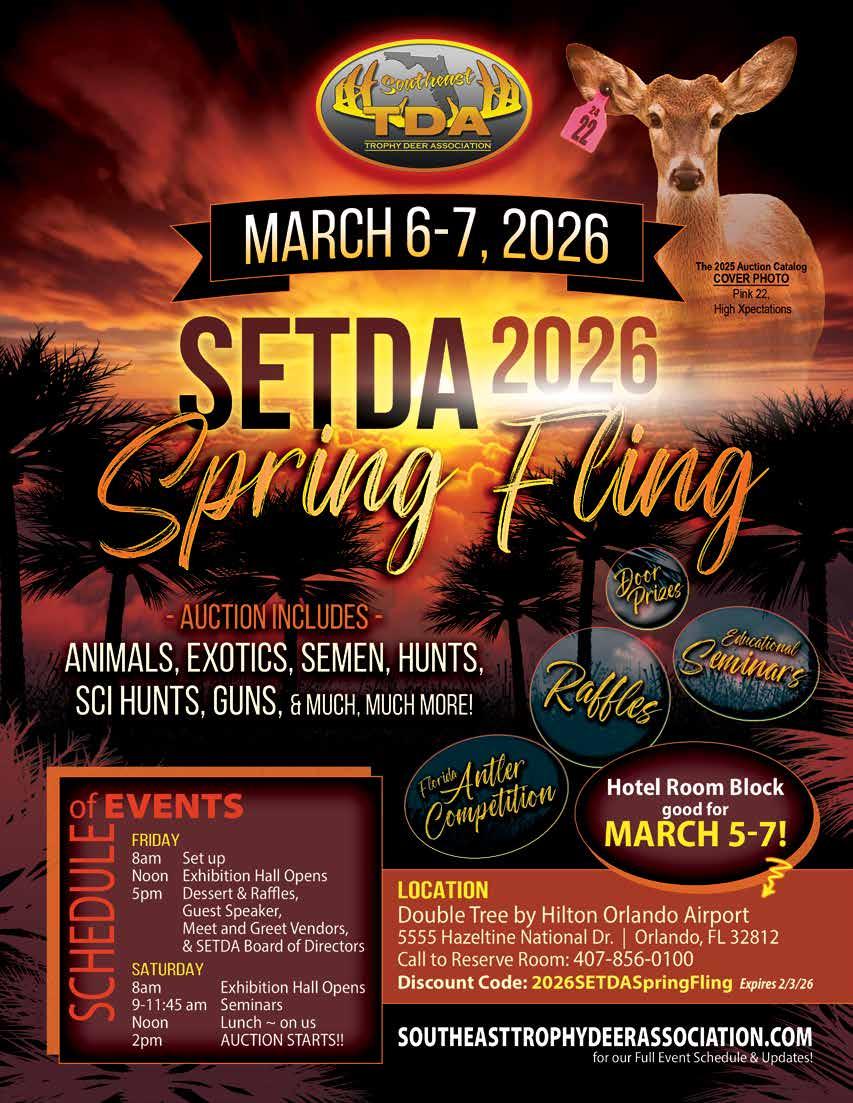
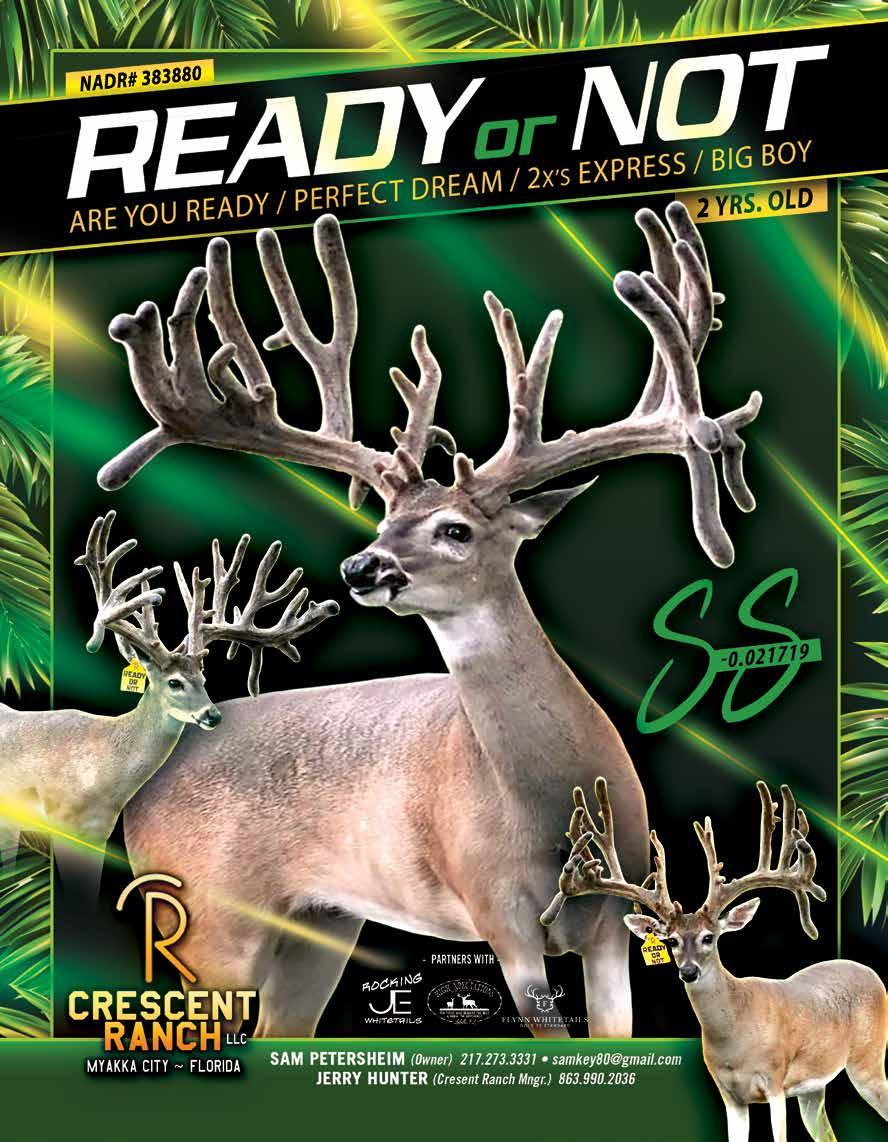


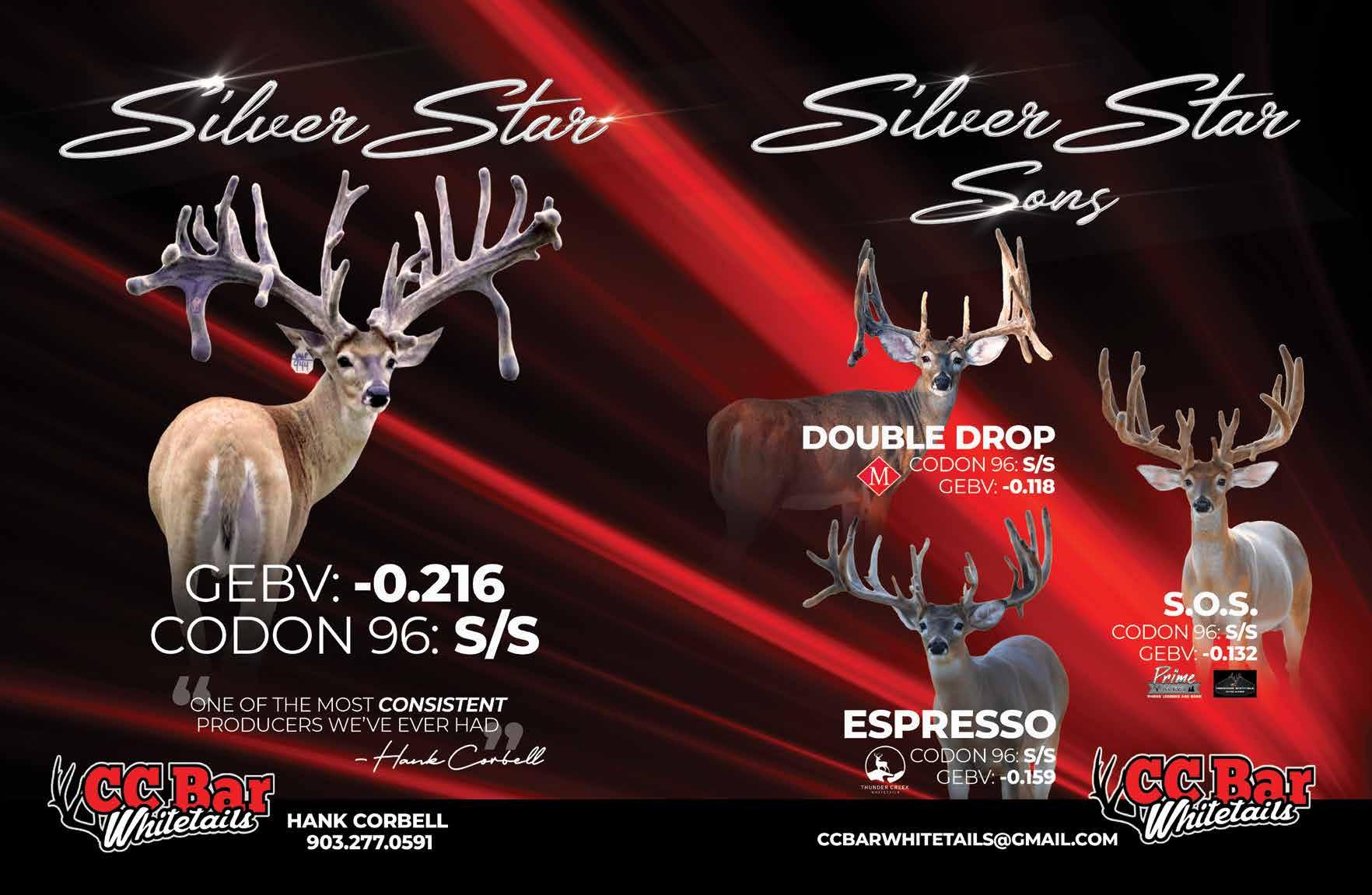



MK2™ KIT - PROPRIETARY FORMULA
The most widely used MK™ Kit on the market today. Contains a higher concentration of medetomidine and ketamine than the original MK™ formulation which provides the ability to use less medication and a smaller dart resulting in improved accuracy when capturing.

Image: Sting & Zero Gravity (The Swamp Whitetails)
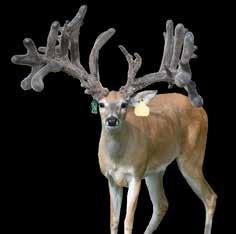

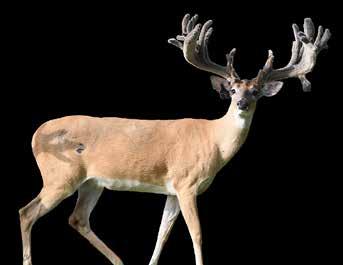
MKB2™ KIT - PROPRIETARY FORMULA
Contains higher concentrations of medetomidine, ketamine and butorphanol than the MKB™ Kit, which provides the ability to use less medication and a smaller dart, resulting in improved accuracy when capturing. It’s recommended for super exotics and large cervids that may be more difficult to sedate.

MKB™ KIT - PROPRIETARY FORMULA MKBM™ KIT - PROPRIETARY FORMULA
Developed by a zoo veterinarian to allow wildlife handlers to induce a reversible sedation, the MKB™ kit offers smooth induction with faster reversal times due to the lower concentration of ketamine. It’s recommended for sedation scenarios where the procedure being performed doesn’t require the animal to be on the ground for more than 15-20 minutes. Our MKBM™ Kit builds on our MKB™ combinations by adding midazolam to provide superior muscle relaxation and more reliable sedation. It’s recommended for the chemical immobilization of numerous large exotic hoofstock species including bongo, kudu, gazelle, eland as well as other African hoofstock and certain domestic wildlife species.

LEARN MORE
Disclaimer: The information contained in this advertisement is general in nature and is intended for use as an informational aid. It does not cover all possible uses, actions, precautions, side effects, or interactions of the medications shown, nor is the information intended as medical advice or for making an evaluation as to the risks and benefits of using a particular medication. You should consult with your veterinarian about diagnosis and treatment of any health problems. Information and statements have not been evaluated by the Food and Drug Administration (FDA), nor has the FDA approved the medications to diagnose, cure or prevent disease. Medications compounded by Mixlab are prepared at the direction of a veterinarian. Mixlab compounded veterinary preparations are not intended for use in food and food-producing animals. Mixlab does not recommend, endorse or make any representation about the efficacy, appropriateness or suitability of any specific dosing, products, procedures, treatments, services, opinions, veterinary care providers, or other information that may be contained in this advertisement. Mixlab is not responsible nor liable for any advice, course of treatment, diagnosis or any other information, services or products that you obtain through this advertisement.
By: Gail Veley • Sponsored by the Southeast Trophy Deer Association
If you only need one reason to attend every annual Southeast Trophy Deer Association Spring Fling event, President Bill Leffler can tell you what it is. The Cervidae Health Research Initiative. (CHeRI), a team of Florida-based scientists, is the only group in the U.S. that works as closely with deer farmers as they do, explained Vilma Cooper, a former CHeRI Ph.D. student in entomology. The dedicated team at CHeRI works to ultimately determine how to help Florida deer farmers raise healthier deer. CHeRI offers hemorrhagic disease testing for Florida deer farmers free of charge and extends their services, for a nominal fee, outside of the state.
Typically, the scientific conclusions that CHeRI reaches are applicable to many other deer farming states who may face similar challenges. CHeRI’s services include tissue testing for detection of hemorrhagic disease, diagnostic assays to determine the most appropriate vaccines for protecting against deer diseases, intervention strategies for controlling predatory insects and more, Cooper said. Some of the main accomplishments by CHeRI over the last few years include testing the effectiveness of
EHD vaccines and pinpointing that merely three species (Culicoides insignis, Culicoides stellifer and Culicoides venustus) out of 50 biting midge fly species, are involved in transmitting hemorrhagic disease viruses. CHeRI also determined that ultra-low volume (ULV) applications (sometimes known as fogging) with permethrin can be effective in controlling biting midges when applied as indicated on the label, and that these applications may be most effective when done between 10 p.m. and 2 a.m., the time when biting midges are most active. Insecticide treated barriers (shade cloth treated with permethrin 0.5%, InsectGuard) can also reduce the number of midges biting deer by more than 150 times.
Each year at the SETDA Spring Fling, CHeRI has a booth. Members of their team share relevant research updates and provide a means for deer farmers to express their needs and support CHeRI’s research initiatives. In 2026, the Spring Fling is scheduled to take place March 6th and 7th at the Double Tree by Hilton near the Orlando Airport. Booth spaces tend to go quickly, with a capacity inside the event room for up to 29 booths. Interested
attendees should call Double Tree now to reserve a room at 407-8560100. “We are attempting to grow our event larger all the time,” Leffler said. “We have a waiting list for booths so let us know right away and you will be put at the top of the waiting list. We are so glad that CHeRI is one of our sponsors and that they are such a fantastic group of people who really have our back. We feel very lucky here in the state of Florida.”
In addition to great sponsors, three other important factors can help make any deer farming event successful, Leffler shared. “First of all, the attendees and camaraderie. You can’t get the full experience of an event simply by being a spectator bidding online. Second is the education you can receive that saves deer and makes us better stewards for our animals. Third is networking and the support of our sponsors and donors, knowing without them none of it would even be able to happen. We owe it to them and to ourselves to be there.”
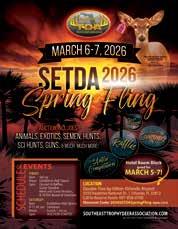

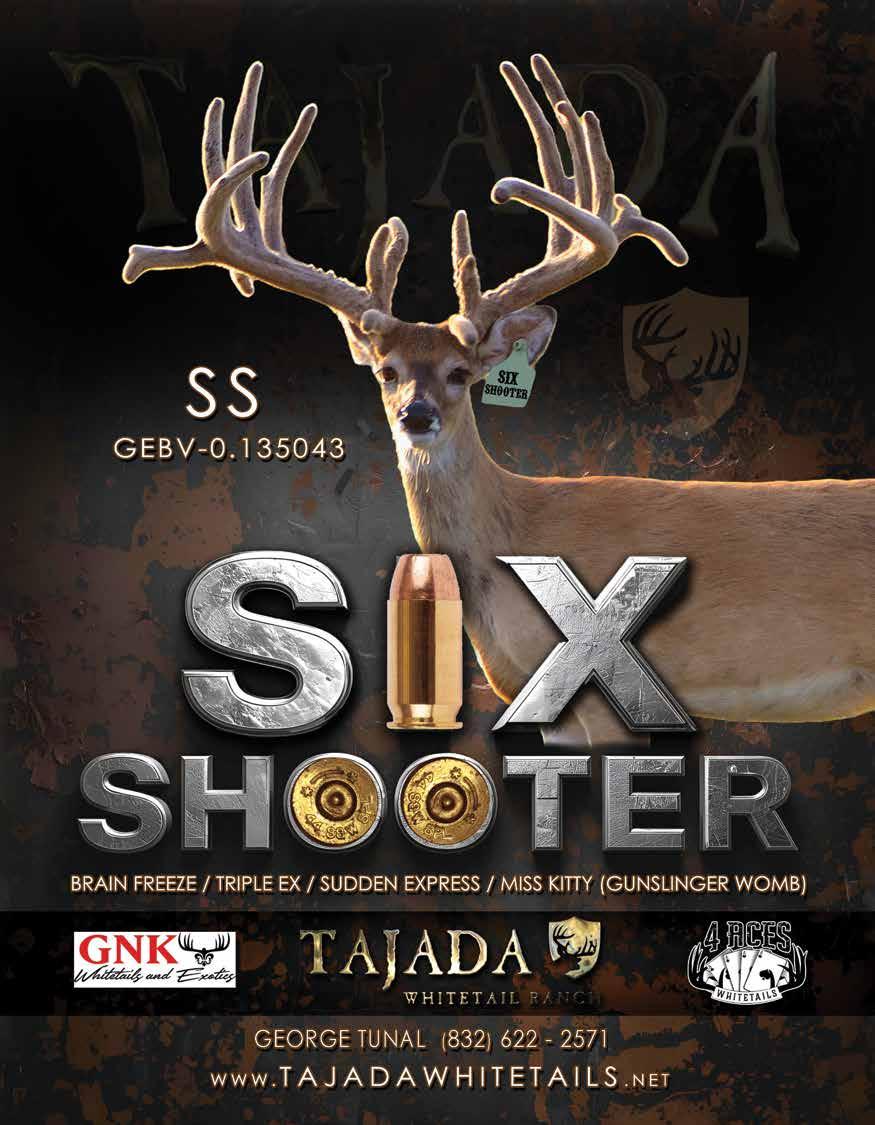


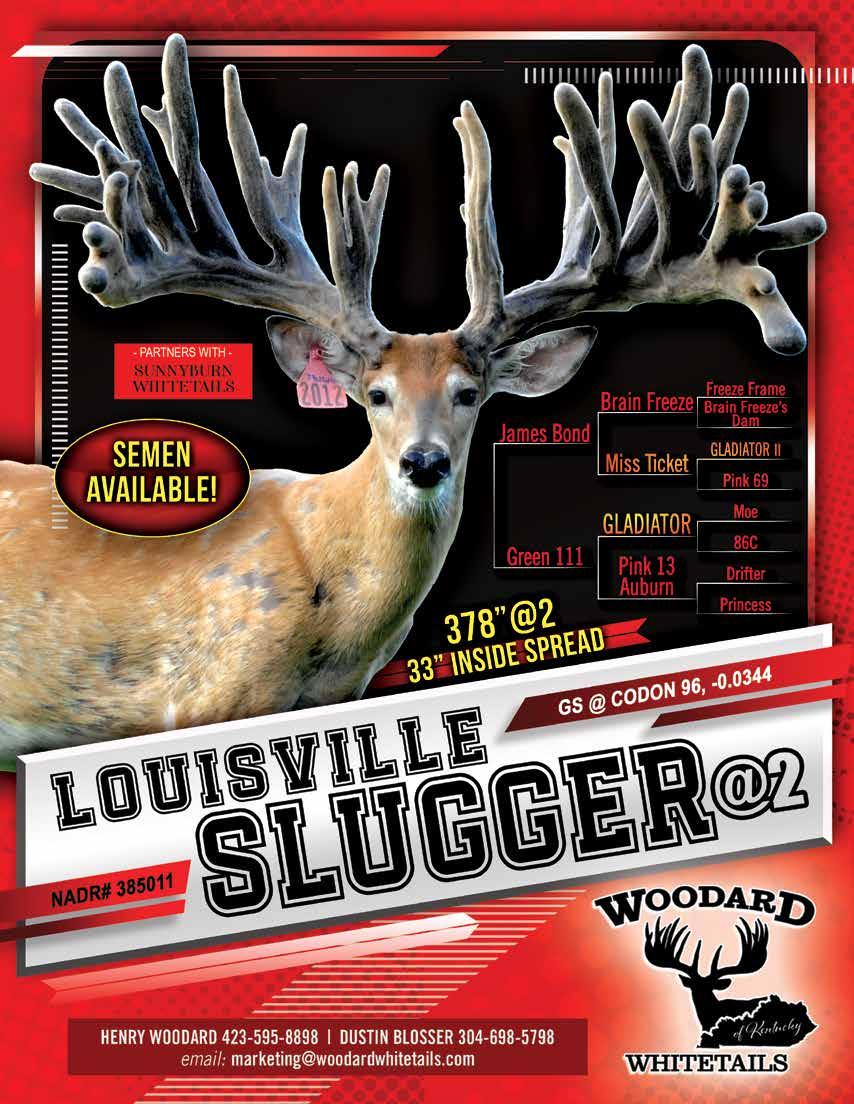
During our first fawning season, a veteran deer farmer recommended giving our bottle-fed fawns a daily fruit bowl once they were a few weeks old. So, we began offering strawberries, grapes, and watermelon.
We quickly learned that every deer has its own taste! With the rising cost of produce, we reached out to local grocery stores to see if anyone would donate any leftovers. Most said no due to liability reasons, but we were lucky to find one generous store happy to help. Soon, our deer were sampling everything from sweet potatoes and collard greens to cantaloupe, broccoli, apples, pears, and even brussel sprouts. It didn’t take

long to realize that deer are just like people - some love tomatoes and pears, while others turn up their noses.
While our herd’s main diet still consists of protein pellets and perennial peanut hay, the fresh fruits and veggies have become a fun, healthy treat that’s boosted both their nutrition and their approachability and friendliness.
Shane Maxwell Farm Manager Flynn Farms
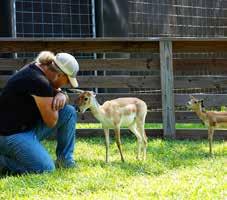
We created this magazine in order for 2025 Breeder and Hunting Preserve advertisers to showcase their most recent photos of their bucks close to the last days of antler growth. We realize establishing a collective deadline for all states Fall magazines to publish on the same date to obtain last-minute photos would be impossible to achieve. With this magazine, advertisers have one more chance to showcase their bucks.


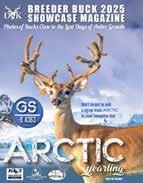
Just in time for semen sales, getting ready for breeding season! Scan QR Code to View the 2025 Magazine!

~ Thank you to all that participated!
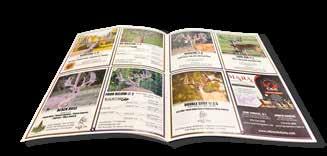


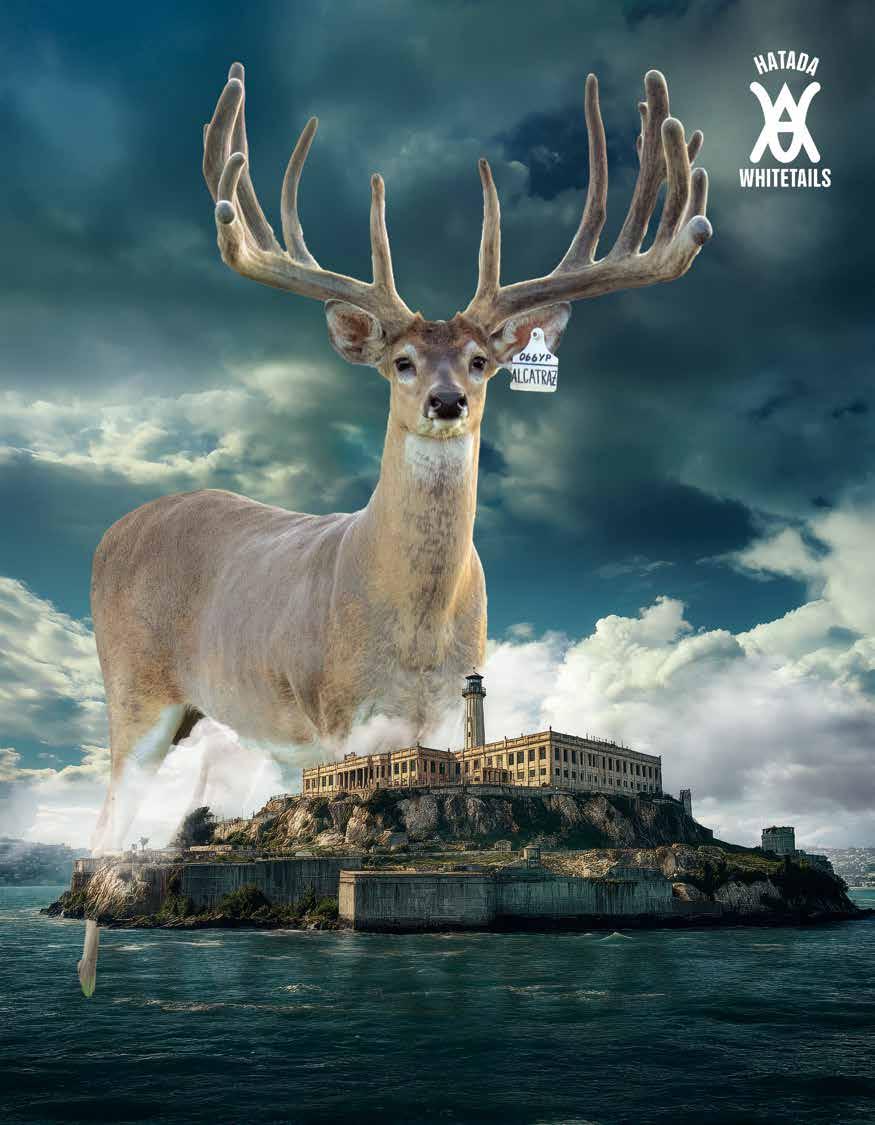

The Board of Directors (Board) for the Southeast Trophy Deer Association (SeTDA) has an open Board position. SeTDA is looking for a HARD WORKING individual who will devote the necessary time and energy to accomplish the following missions of SeTDA:
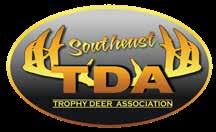
•To promote the business of raising and marketing Whitetail Deer in the State of FLORIDA.
•To provide educational opportunities for members of the Corporation and other interested people through the sharing of information concerning Whitetail Deer.
•To serve as a collective voice in governmental issues that affect whitetail deer producers, so as to enhance the Whitetail Deer industry.
•To promote high ethical standards in the care, handling and harvesting of Whitetail Deer.
•To require members of the Corporation to operate in a legal, honest and forthright manner with fellow members, other Whitetail Deer producers and the general public.
If interested in applying for a Board position, please answer the following questions:
1.Please describe yourself and what you do outside of the cervid industry.
2.Please describe your operation. (How long have you been raising deer? Where is your farm located? Whatspecies are in your breeding program? What are your primary markets? Etc.)
3.Describe any roles you have served in (committee member, officer, etc.) for your state and/or nationalassociation (NADEFA).
4.Describe your position on open borders for your state of residence, as well as from a national perspective.
5.Why do you want to serve as a SETDA Director?
Mail to Dr Bill Leffler c/o 2 Base Down Whitetails, PO Box 159, Morriston, FL 32668 or email to Bleffler2011@gmail.com


Visit our website for updates: southeasttrophydeerassociation.com
We are excited for you to explore the many industry articles, deer farming and vendor advertisements, and much more. We would like to encourage you to JOIN or RENEW your membership with SETDA in support of keeping the Cervid Industry live and well in our state.
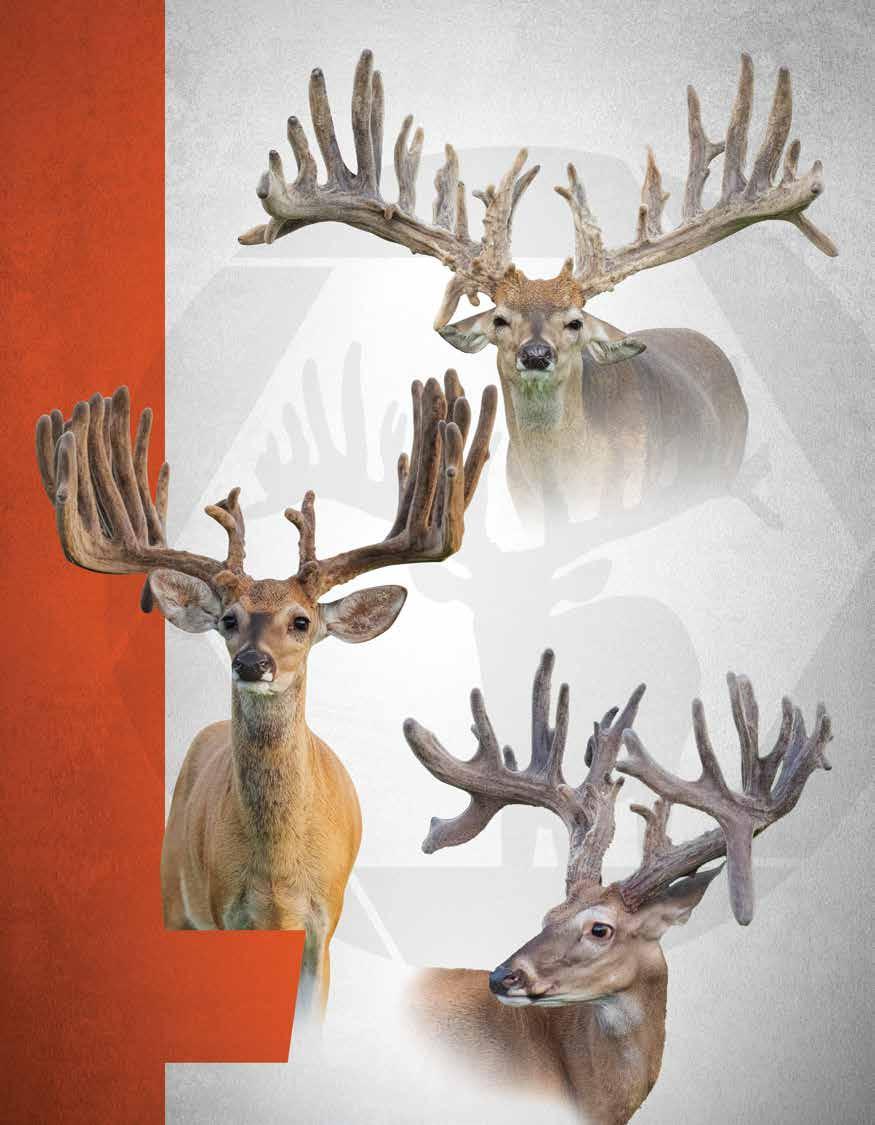



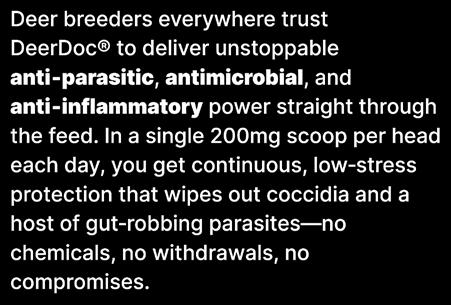




By Dr. Bill Leffler
Whitetail deer have the ability to ultimately solve the problem with CWD over time via natural selection and evolution. That process may take hundreds of years and potentially much longer, if the practice of indiscriminate killing and depopulation continue. This continues to be one of the primary plans which both Federal and State agencies have adopted, even though they know that the disease is not density dependent but rather frequency dependent. Unfortunately, deer don’t wear signs indicating what their PRPN genotype or genomically estimated breeding value is before they’re killed. Back in August of 2024, the USDA APHIS recognized that deer having SS alleles at codon 96 and GEBVV cutoff values more negative than -0.05, possess the greatest resistance to CWD. Even though most states now acknowledge it as well, to date, only one state, Oklahoma, has decided to help the whitetail deer and speed up the evolutionary process by releasing farm raised CWD resistant deer into the wild.
On October 2, 2025, the second case of CWD in a whitetail deer in Florida was confirmed. FWC reported that the 1.5-year-old roadkill doe carcass was discovered in Holmes county, only .7 miles from the location of the first case. I find it questionable that not a single other case could be found from all the deer that were killed (depopulated) from the quarantine zone, in Holmes, Jackson, and Washington counties since the original case in 2023. Perhaps they forgot that the disease is NOT density dependent but rather frequency dependent. In other words, it is how often, or the number of times, that a non-infected animal is exposed to CWD prions before it becomes infected. There are many means by which an animal can be exposed to CWD prions as I have discussed and exposed in previous writings.
Many of the following were corroborated, according to the article published by the CDC, Volume 30, Number 10- October 2024:
Temporal Characterization of Prion Shedding In secreta of White-Tailed Deer in Longitudinal Study of Chronic Wasting Disease, United States
Factors that affect an Infective Dose
1. Low concentration of prions
Years previously, Dr Haley ranked the infectivity of bodily fluids in relation to potential CWD transmission, from highest to lowest as follows:
Brain
Carcass
Lymphoid tissue
Deboned meat
Digestive tissue
Blood
Saliva
Feces
Urine - it is estimated that it would take 33,000 gallons of infected urine to equal 1gram of infective brain tissue



2. Route of exposure - many studies have proven how easy it is to cause infection via injection, especially intra-cranial, compared to orally
3. Infection by the environment - CWD prion shed into the environment can remain infectious for many years
4. Genetic factors - 96GG genotype in whitetail deer shed CWD prions more frequently in all tissues throughout the disease course
5. Single vs. cumulative dose
CWD follows a “threshold dose” dynamic rather than a cumulative one. One study found that 50m! of infected urine given orally to deer did not cause disease within 19 months. Another study estimated the oral infectious dose to be 16 ounces of infected urine.
The first case of CWD in Florida was NOT from Captive farm raised deer, but rather from wild native deer which was proven by DNA testing. This is also found on FWC Website under FAQ about Chronic Wasting Disease in Florida. The same findings will ultimately be proven about the second case. Many people forget, and agencies certainly do not want to admit or ever tell you, that once CWD is in the wild population it cannot be stopped. FWC comes close to admitting this on the same website.
Let’s face it folks, CWD is in Florida and it’s here to stay!
Last month, I spoke with Steve Padgett, who owns a preserve within the quarantine zone in Holmes County, and a deer farm just outside of the quarantine zone. We discussed the meeting that was held with 8 representatives from FWC. They informed him that FWC has no foreseeable plans in the works to change or alter the joint CWD response plan or quarantine zone which they and FDACS developed. Further, they had just discovered and confirmed a second case of CWD less than .7 miles along the same stretch of road from where the first case was found. We both found this oddly strange and convenient.
One day they may ask deer farmers for help to “save Florida’s deer” by releasing CWD resistant deer as Oklahoma has. Until then, you might want to consider the only proven effective means to slow the spread of CWD, and begin breeding genetic resistance into your herd.
Sincerely, Dr. Bill Leffler


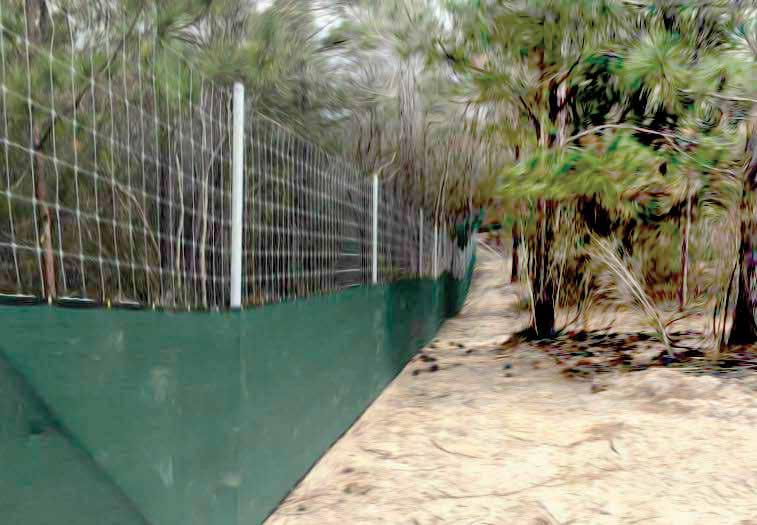


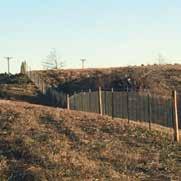







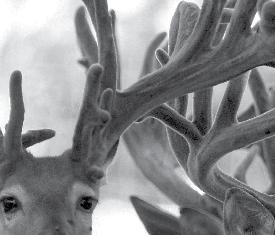



™




NOW ENHANCED WITH APPETITE STIMULANTS & PROBIOTICS!





















DESIGNED TO HELP INCREASE YOUR PEACE OF MIND... WHEN YOU NEED IT MOST!

Rut and reduced feed intakes can bring out the worst in bucks and irritable behavior can rear it’s ugly head!
PeaceMaker is scientifically formulated to provide optimal support levels of magnesium, Vitamin B1 and inositol to help maintain a normal and relaxed disposition in cervids
Now enhanced with appetite stimulants and probiotics for digestive health
Contains no herbals nor tryptophan, eliminating concerns of unwanted side effects
Use PeaceMaker™ to help “keep the peace” during pre-rut, rut, transportation and other key times during the year
Now available in a 30 lb resealable bag and 11.25 lb pail to help fit your operation’s needs

ROBUST, FAST GI SUPPORT FOR FAWNS & OLDER DEER

Designed to quickly support normal GI health
Novel formula delivers powerful immune support
Can be used post tranquilization to help speed recovery












DIGESTIVE HEALTH & IMMUNE SUPPORT CERVIDS OF ALL AGES

Supports digestive health and a healthy immune system
Natural formula contains Encrypt®, egg proteins, enzymes, micro-encapsulated probiotics and a prebiotic
Top dress or mix in feed during fawning season, weather changes, times of stress and when top performance is desired







Sarah Beth hunted him for 2 years before he made a mistake. Her best yet!
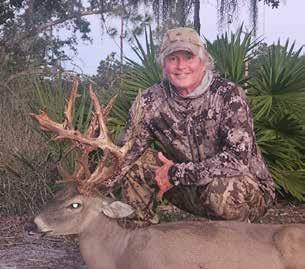
The “Briar-patch buck” took Mark’s breath away.


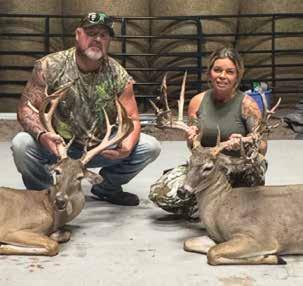
Couples that hunt together stay together. Congratulations Trey and Melissa!


Maddox’s best deer ever... and with a bow.


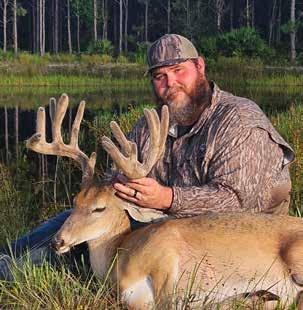
Joe with an early season velvet buck.

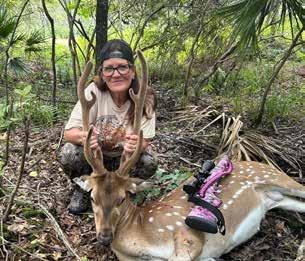
Kathy put the new pink gun to work on her first Axis deer.


That’s one proud dad. Cayden does it all, a great athlete, pretty cheerleader, and did I mention she loves to hunt?





To have your Most Memorable Hunt featured in the next Southeast Tines send a photo and a short story to deerassociations@gmail.com. Subject line should be “My Most Memorable Hunt”.
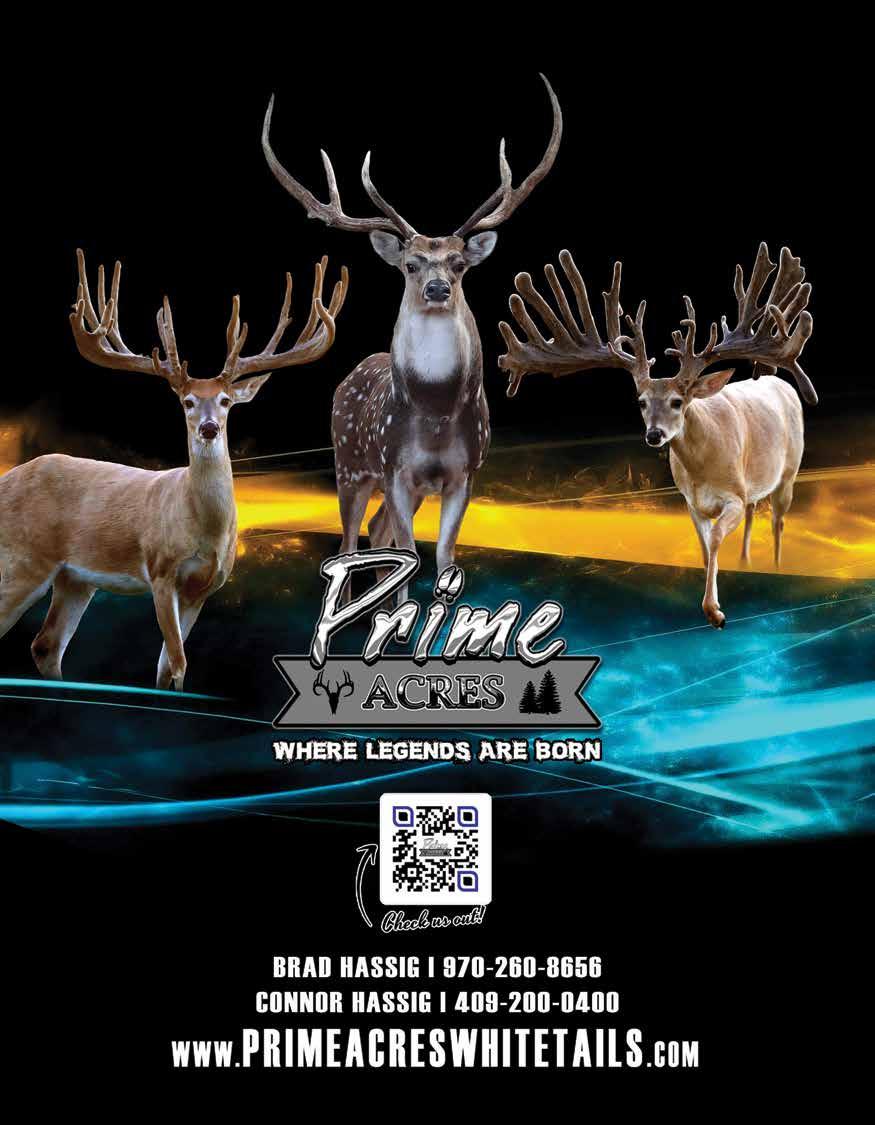
By: Gail Veley • Sponsored by The Whitetail Deer Farmers of Ohio
The fastest way to get to negative GEBV’s such as -.3 or -.2 or better, is to use deer that have SS markers and negative GEBV values, offers Ivan Hochstetler of Double H Whitetails, 25-acre deer farm in Mt. Eaton, Ohio. However, proven production and pedigree can also play a huge part in exactly how you arrive at having such a herd. Many deer farmers simply do not own (at this point) quality breeding bucks that are SS with negative GEBV breeding values. Yet it seems “every year a good buck comes out with good markers,” Hochstetler said. “For us, we buy SS semen with negative GEBV values from privately owned farms.”
The push to breed for SS markers and negative values and the realization that it was going to become necessary, began about five years ago, Hochstetler believes. Three years ago, things got more
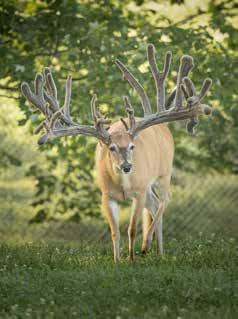
serious. For Hochstetler and his herd of powerhouse GG does, he knew he needed a strategy. In breeding his proven and very valuable GG does to SS bucks with negative GEBV values, he is now producing GS deer and some SS negative breeding values. He has also not culled any deer but rather has sold some to hunting preserves. If all goes according to plan, in five years Double H Whitetails will see a huge impact as a result of their breeding decisions and have their very own SS bucks for breeding. “We’ve tested our offspring, and they are more and more resistant with each breeding cycle,” Hochstetler said.
Utilizing your current herd while working towards resistance breeding is a strategy that Joe and Crissy Johnson, owners of 7-acre Whiskey River Whitetails in East Sparta, Ohio are also abiding by. “We are doing a mix and not giving up proven production and pedigree,” Joe Johnson said. “Ninety-five percent of our deer are foundation deer to Ms. Patrick, a line that has proven itself for decades and decades.”
When Whiskey River Whitetails first got started three years ago, they acquired GG deer as starting stock for raising typical deer. Today, they use semen from SS bucks and have subsequently acquired GS offspring. “In a couple years we hoping to have phased out the GGs and have our very own SS big clean typical breeding bucks,” Johnson added.
While solid scientific proof points to the understandable justification for SS production, things can and often do change quickly in the deer industry. Therefore, Johnson, 47,
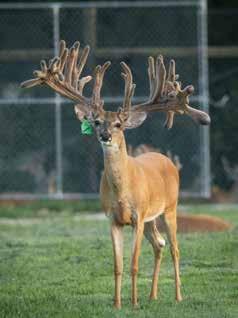
believes his decision to preserve pedigree and proven production is a solid one, no matter what the latest trends may be or could become.
“At this point I say ‘to each his own’ in finding what works for you and your farm,” he said. “Everyone has their own opinion on what is best for them.”
Going forward, Hochstetler feels that currently, “there’s not enough people selling markered does, but as that begins to happen it might be harder to afford to acquire them, especially for the new deer farmer,” he explained. However, while this may or may not prove to be a stumbling block “deer farmers are the solution to CWD and I feel having a reliable markered herd is what we’re all going to need, along with the indisputable proof from NADR that it’s real.”




December 15th 2025
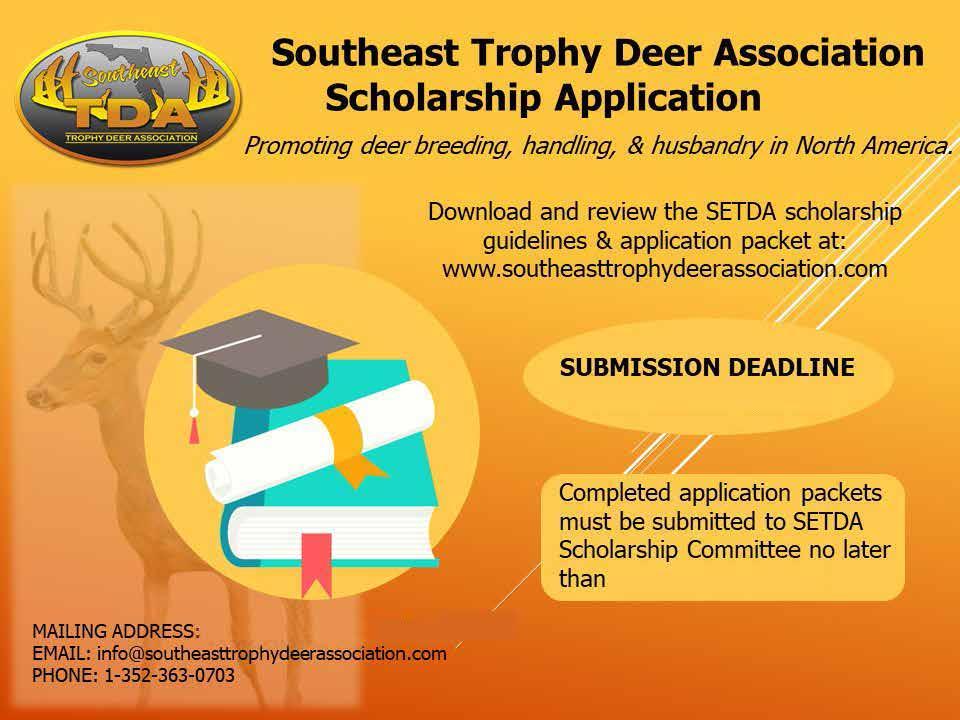
December 15th 2025
Mailing Address PO Box 159, Morriston, FL 32668
Email: info@southeasttrophydeerassociation.com
Phone: 1-561-373-2353

Northern Top 30 - Jan 14-16, 2026 - Shipshewanna, IN
Alabama Deer Association Spring Auction - Feb 21, 2026 - Cullman, AL
Kansas Deer & Elk Association Convention - Feb 28, 2026
Southeast Trophy Deer Association Spring Fling - March 6-7, 2026 - Orlando, FL
NADeFA Spring Open - March 20, 2026 - Sandusky, OH
KALA Summer Showcase - Aug 8, 2026
Whitetail Deer Farmers of Ohio Convention - Aug 13-14, 2026
Southern Top 30 - Aug 20-21, 2026 - Louisiana
TDA Annual Convention - Aug 28-29, 2026 - San Antonio, TX
Publisher


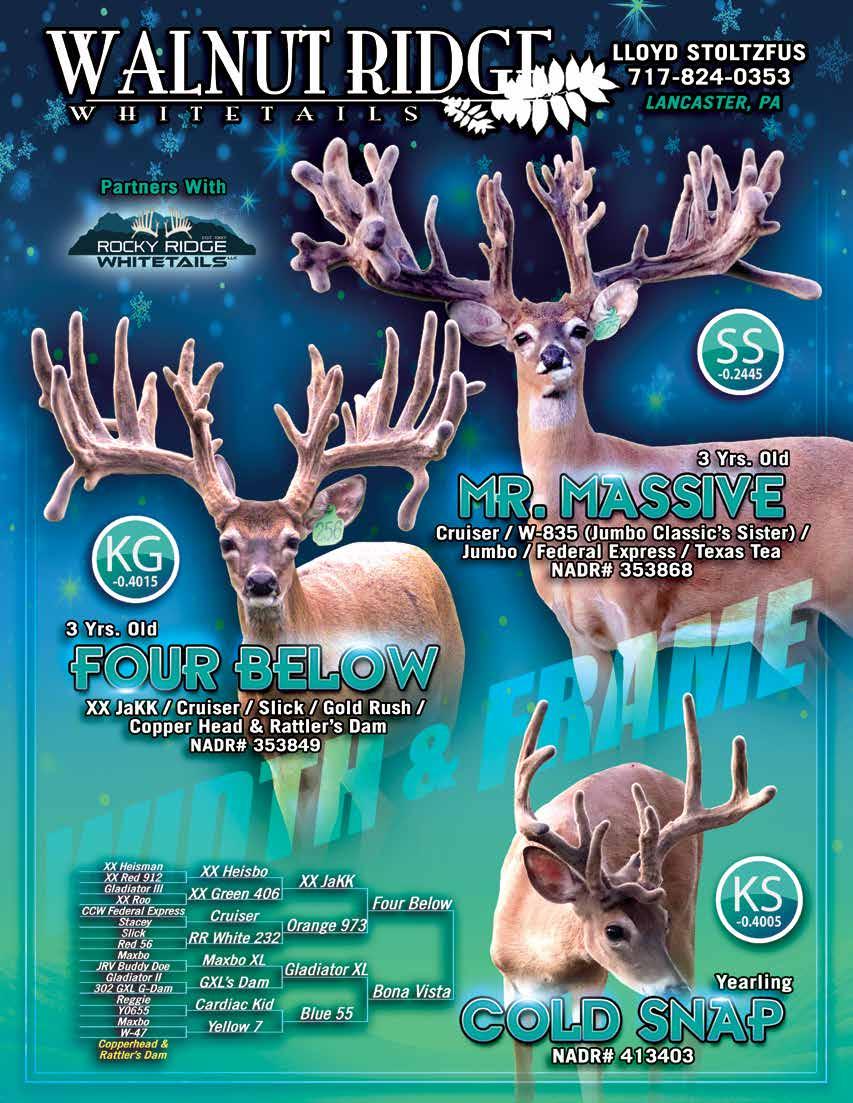


By: Gail Veley • Sponsored by the Southeast Trophy Deer Association
Deer, with their memorable antics, characteristics and often times unusual behavior, earn a place in a deer farmer’s heart and perhaps a funny name along with it. The following is a list compiled by deer farmers willing to share their story.
Upper Midwest Trophy Whitetails. Hazel, South Dakota. “Hammer Time” – a buck named after the local game warden and “Ever Ready,” a son of Excel.
Haas Fallow Deer Farm. Warrenton, Missouri. “Couch Tater” - named so after being abandoned by his mother, being bottle fed and spending a lot of time on the couch watching television, and “Dart” after being delivered and saved by owner Jeff Haas, who still greets him with a bark.
Awesome Whitetails. Middlebury Center, Pennsylvania. “Mallory”given her name after she became a family pet and responded with twitching ears to being called “Mal Mal.”
Baker Whitetails. Junction, Illinois. “Master Baker” – a buck named by Chase Baker after Kyle Neal of Neal’s Whitetail Ranch in Ewing, Illinois, dared him to do it.
Shallow Pond Whitetails. Shipshewana, Indiana. “Humpy” - named by Dave Schwartz for the buck’s protruding shoulder blades.
Double H Whitetails, Dundee, Ohio. “Bambi Boo Boo” got his name when as a young buck fawn, he made a “boo boo” inside the house.
MVP Whitetails. Kaufman, Texas. “Ping Pong” was named after his flighty disposition and propensity to run into and bounce off of fences. He was later renamed “Ricochet.”
Sterrett Knob Whitetails, Fredericksburg, Ohio. “Reject” got his name after he was left for dead by his mother. After turning into a big and sturdy buck, he let Levi Miller’s kids ride him like a horse. After he was later sold to Eric Klick, he continued to live a good life and died of old age.
2 Base Down Farm. Morriston, Florida. “Minnie” is one of several girlfriends of breeding buck “Mickey.” Minnie was born weighing two pounds six ounces but is alive and well today. “Nala,” named after the young lioness from The Lion
King, has a very noticeable mane. “Houdini,” earned her name after escaping from a fawn proof pen.
Other deer names at 2 Base Down might be self-explanatory such as “Ms. Fancy Pants” or an abandoned three-pound fawn named “Mercy Me.” When a young buck fawn broke his leg, they named him LBB for “Little Boy Broken,” who went on to be a prized breeding buck, while teaching a valuable lesson. Never give up on a fawn. “When we raise and name deer, we have fun doing it,” Leffler said. “With our breeding buck Mickey, we figured if a mouse named Mickey could put Florida on the map, then our very own “Mickey” could do that for our farm.”
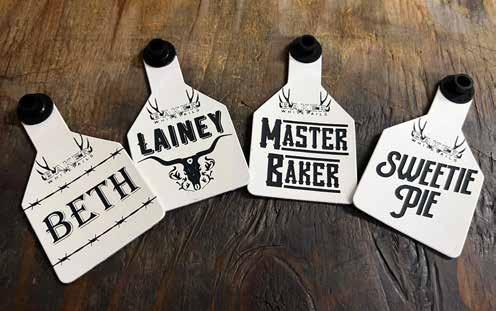
IF YOU HAVEN’T TRIED PNEU-DART’S RDDS, YOU’RE MISSING MORE THAN YOUR TARGET
Did you know impact trauma can negatively influence medical treatment? We do. Which is why we’ve spent 55+ years perfecting the ideal remote delivery device. Shorter in length and lightest on the market, our disposable RDDs, with patented Slo-Inject® technology, provide ultimate accuracy while reducing the potential for problematic hematomas. Pneu-Dart. When you can’t afford to miss.®


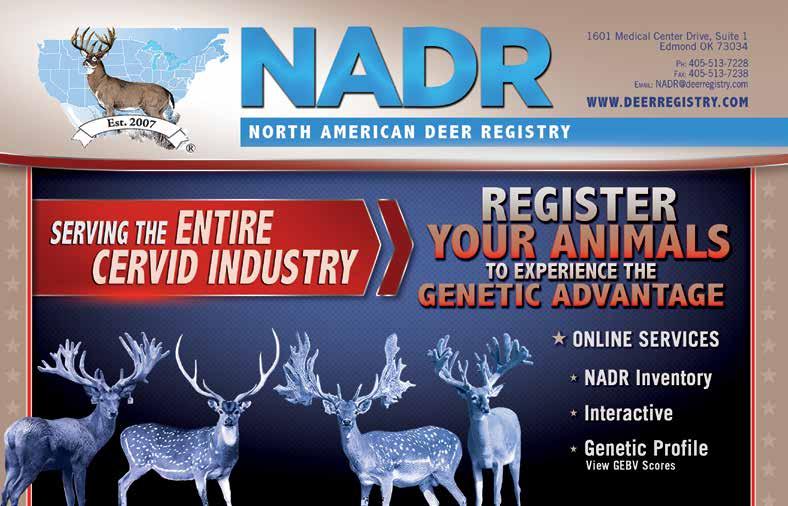


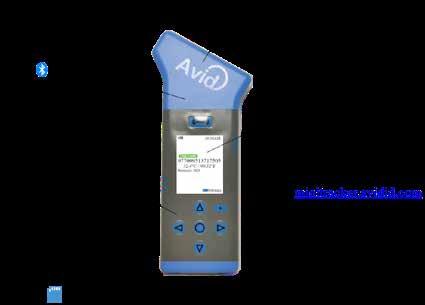
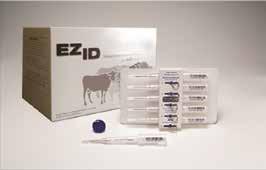


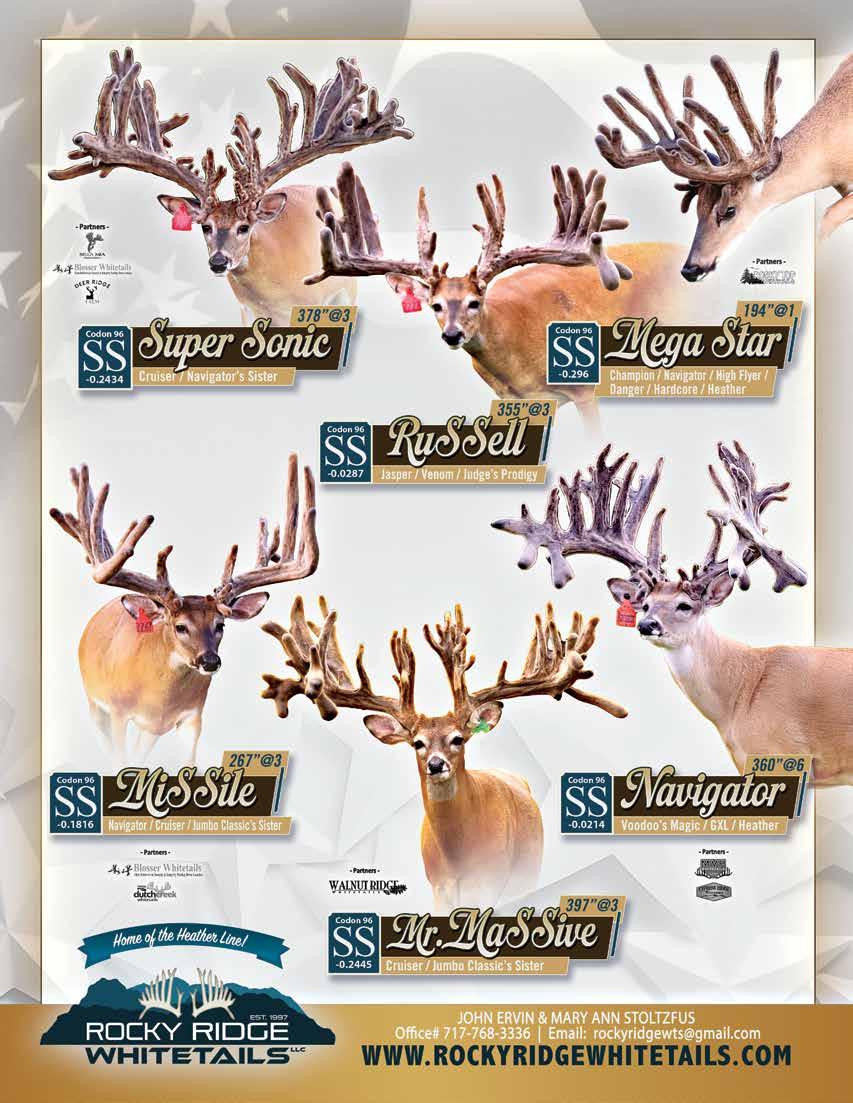
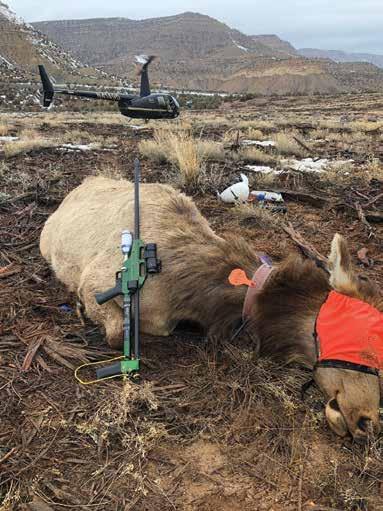




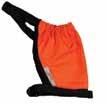

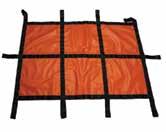




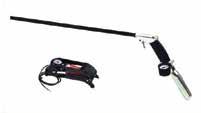
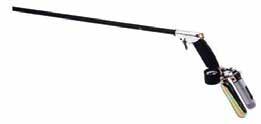
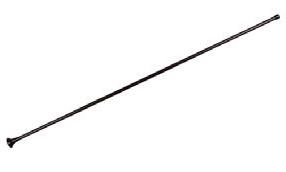
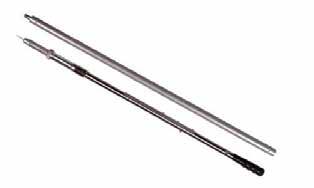
By: Gail Veley • Sponsored by The Indiana Deer and Elk Farmers Association

Aprofessional deer hauler hopes for a few very important scenarios when they pull their rig into a farm. This includes adequate room to get the truck and trailer turned around and aligned or situated safely in the loading area, along with dry ground conducive for the occasion. “Everyone gets a little nervous when you’re loading deer,” said Delvy Workman of Deer Works, a professional deer hauling company out of Ashland, Ohio. “A lot of people don’t think about loading or unloading deer when they set their place up. This is a really crucial thing to figure out.” Having hauled deer for 14 years, Workman hopes for the most efficient process possible.
Ensuring a safer loading experience begins first with allowing your deer to walk into and through your handling facility on a regular basis, said Dave Schwartz of Shallow Pond Whitetails in Shipshewana, Indiana. “Once we wean our fawns, we move them into a corral pen that’s attached to the handling facility and utilize that to get them used to it,” he said. “That way we can get them into there in a short amount of time when we need to.” By also working deer at random times and moving them into dark
‘pre-loading’ rooms, it can eliminate or greatly reduce the amount of stress put upon deer. “We can sell a doe and within five minutes live load her onto a trailer,” said Schwartz, who prefers to load deer into trailers specifically designed for deer (not a makeshift horse trailer) and to use a reputable, reliable hauler. “There are good deer haulers out there with specialized cargo trailers with great air flow and air conditioning and adequate room for bucks or does,” Schwartz emphasized. “Trailers set up for deer hauling are way better and are going to minimize the stress from the entire moving process. It’s important to keep the stress as low as possible. If you are sedating and loading bucks, make sure they are up and on their feet before moving the trailer.”
Verlin Yoder, a veteran of the deer industry since 1999 and owner of Clay Kuntry Whitetails in Millersburg, Indiana, remembers the days when deer farmers used 2 x 4-foot individualized wooden boxes for hauling deer. This often involved a ‘deer rodeo’ in an effort to get them sedated with telazol and/or rompun, and then inside the box. “It might take four guys. Sometimes you’d have to wrestle the deer down for
sedation,” Yoder recalled. “You’d reverse them inside the box and then they’d jump around inside of it. And we always seemed to have some sort of surprise.” A great sense of relief overcame Yoder when he was able to attain his own handling facility and loading chute in 2006. “It’s one of the best investments a deer farmer can make,” he said. “You need to haul deer for all sorts of reasons. Breeding season. Hunting season. Sales. Boarding.” Boarding does for the sake of breeding requires careful timing, as you don’t want to bring them back too soon or too late in their pregnancy, for fear or losing the offspring due to hauling stress.
Depending on the distance, longer hauling trips, such as up to eight to 10 hours, may require the hauler to put straw bedding down for comfort and to also include hay and water. And last but not least, the most important advice might be “give yourself plenty of time,” Yoder said. “Haul at night when it’s cool and the deer are naturally calmer. Keep the trailer dark and peaceful and wellventilated. You are hauling some very precious cargo and want everyone to arrive safely.”
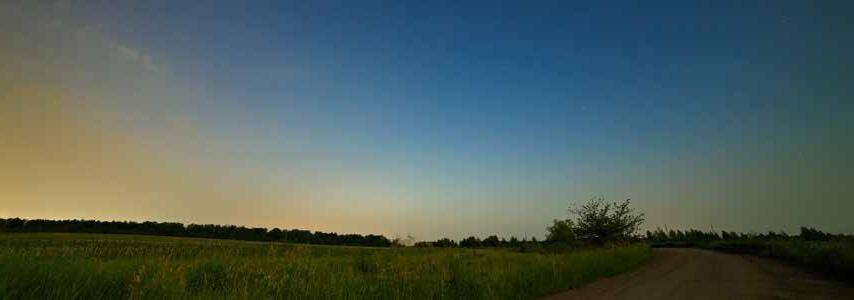

“You need to haul deer for all sorts of reasons. Breeding season. Hunting season. Sales. Boarding.”
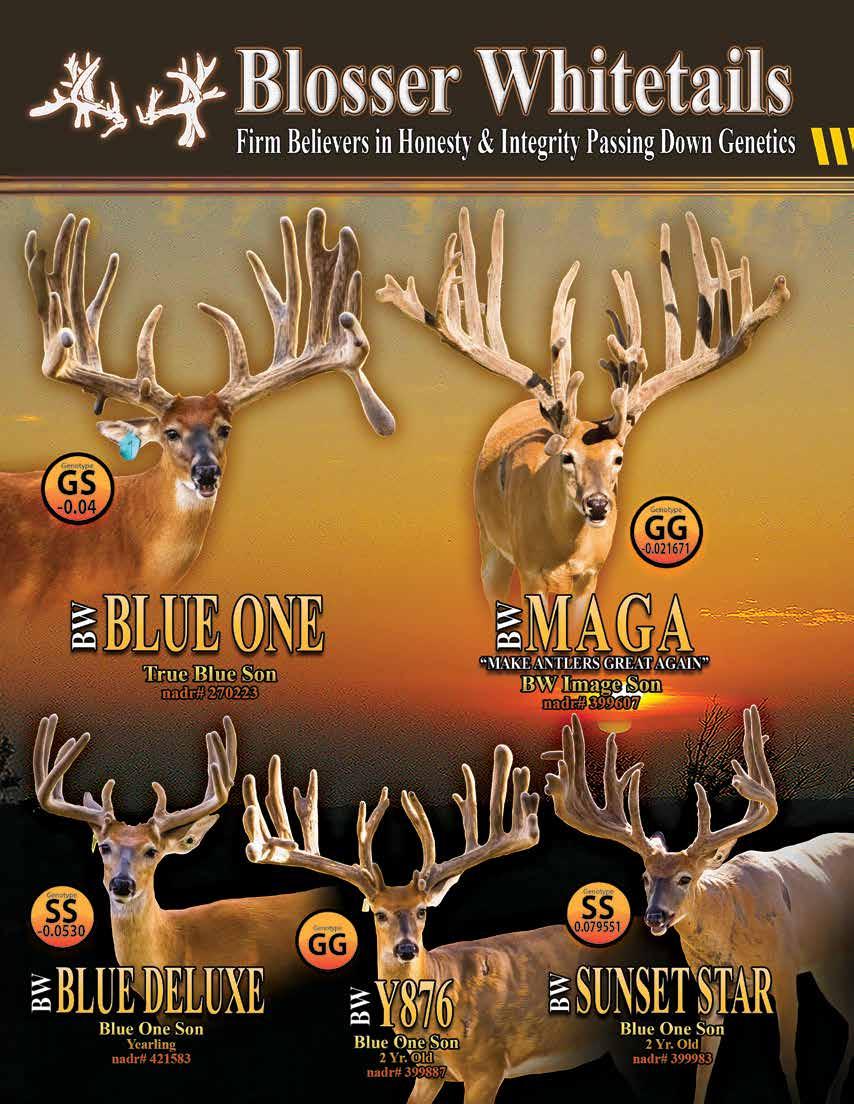
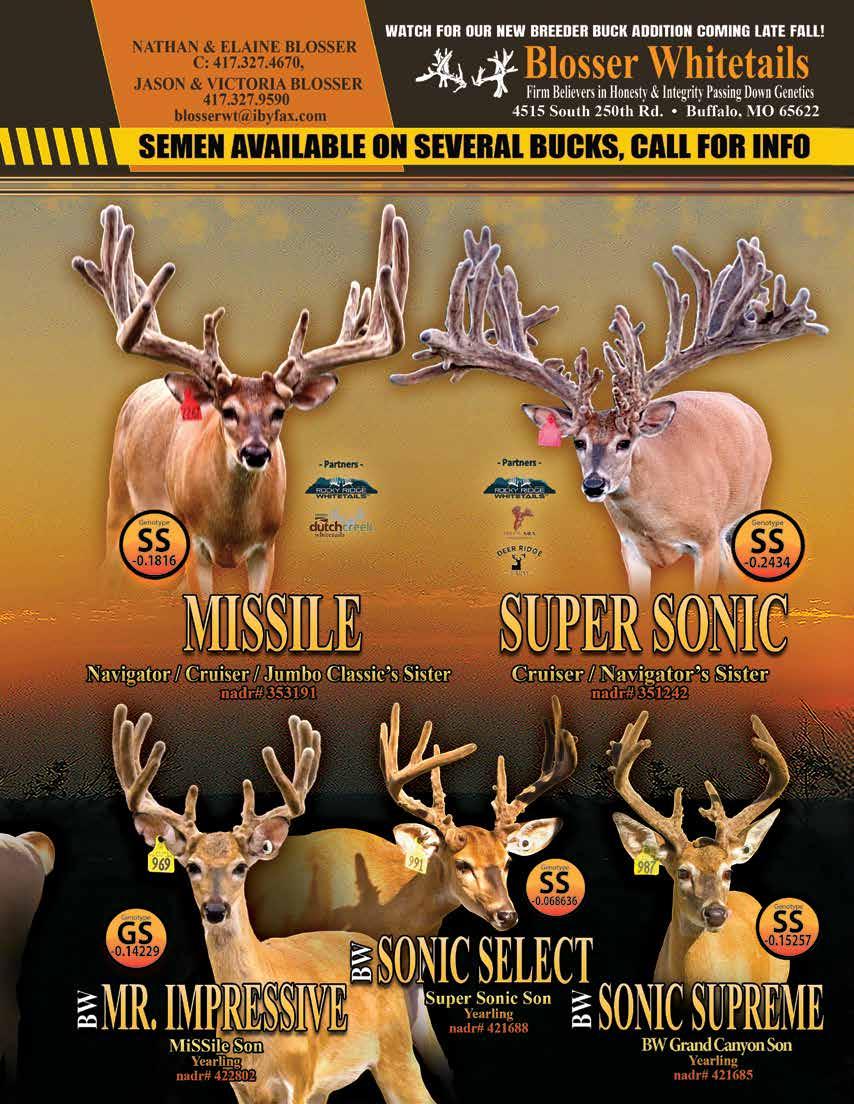
• Do you cut your bucks antlers off or not?
• Is it necessary to cut your bucks antlers off each year?
• Don’t they need their antlers to defend themselves, otherwise they can get hurt?
• I love seeing bucks with antlers, what harm is there in leaving the antlers on my bucks?
• If you cut their antlers, don’t they have problems later on shedding the small parts that are left on?
• Is it true, that if you cut off their antlers that they won’t grow new ones properly in the future or ever as large again?
Each year, I’m asked these same questions many times by various people both inside and outside of the deer industry, as I am sure that many of you are. Although this may be a sensitive subject for many deer farmers, it’s one that you should all be ready and willing to answer.
As a hunter, I’ve seen buck rubs on various sized trees, fence posts, and even telephone poles. I also knew that deer fight, sometimes to the death. There have been many photos of two bucks found locked together dead, or worse, one
These photos show the step-by-step process of tending to the wounds of a whitetail buck who suffered significant injuries. Through careful care and recovery, he pulled through — and now proudly goes by the name Scar, a nod to the marks that tell his story of strength and survival.
by Dr. Bill Leffler
carrying around the remains of the loser’s head with antlers still locked together. I’ve also seen many deer and other deer species, including axis, fallow, mule deer, elk, and moose, that had one antler broken off near or at the skull, and have also found these kinds of sheds. I once killed an Alberta whitetail with a fractured skull plate that had healed, with normal antlers.
The decisions that you make about your deer are your own, but remember they have consequences. The first year that we began raising deer we didn’t fully understand this, and chose to leave the antlers on our two breeders. We’ve never made that mistake again.
I had no idea the size of trees that a large antlered buck would rub or actually kill. No tree is safe in a deer pen unless you protect it!
Our largest doe, was not ready to breed and was killed for refusing to submit. Not by crowning, where a buck drives his antlers into another deer, but by clubbing. He crushed one entire side, from shoulder to hip, resulting in massive hemorrhage, internal organ damage, and death. Far more frightening, occurred while my friend and myself were feeding, the second breeder narrowly missed us as it raced by
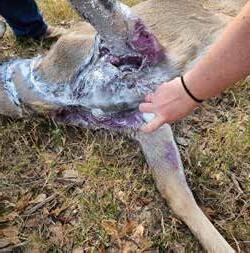
for no reason. Deer can be very unpredictable at times. Both of these episodes occurred within two weeks of each other near the end of November. All cattlemen know that a bull does not need his horns to breed, neither does a buck.
Since then, we have cut the antlers off every breeder that goes into a pen with does, and every buck that remains in a pen with other bucks. All of our pens are separated by a lane eight feet wide or greater. Yet the breeders will still attempt to get at each other, and fight the wire fence. Wire fencing is a lot cheaper than a deer and much easier to repair. Because our property of 107 acres is all high fenced, with numerous deer pens inside, we quickly turn out any does that are not calm. Later we would turn out a buck to breed them. In the past, we’ve left his antlers on. We did this thinking; he could defend himself from other bucks if needed. What a huge mistake! He attacked one of my breeders whose antlers had been cut through the wire fence. The rut was in full swing.
The breeder, being a larger animal, did not back down, and was nearly killed. He was filleted completely around the neck, up and down the inside of both legs, and across his brisket. It took a tremendous
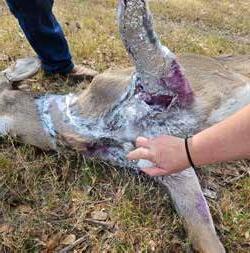
amount of medical attention, special burn cream to grow skin tissue with minimal scarring, frequent debridement of dying tissue, and nearly two years to fully recover and grow a nice set of antlers again. He is named for this injury. Let me introduce you to SCAR.
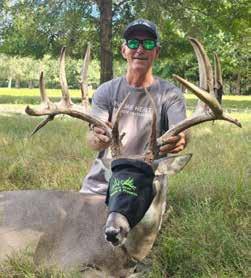
A buck will not grow back a normal set of antlers the following year or potentially ever, if the pedicle is severely damaged, or if he sustains a serious injury, like a broken leg. Another breeder of ours, once slipped and broke a rear leg while in a breeding pen. We moved him from that pen into a oneyear-old buck pen to heal. There was plenty of room in that 3-acre pen, but a couple of the 18-monthold bucks sensed his weakness and fought him for dominancy. The leg that was originally broken high near the hip was now also broken in a lower spot. We then moved him into a pen with buck fawns to heal. We didn’t do that initially because he was aggressive and feared he might

injure our buck fawns. Although he never grew a normal set of antlers again, his semen still did the job producing many great looking sons until the day he died.
Some buck’s antlers are cut due to injuries to soft developing antlers in velvet or to prevent an antler infection from spreading and ultimately killing them. While others are cut off because of a weight imbalance from one side to the other causing a deer’s head to tilt badly. We once had one buck that had to have over 9 lbs. of antler removed from one side to help balance him out. We probably should have taken off closer to 13 pounds. This same scenario frequently occurs with bucks with large drop tines. That buck is now breeding at another deer farm. Truth be known, I wish I had him back, but we can’t keep them all.
Other bucks’ antlers are cut to protect you and the people working with your deer. Everyone should understand the serious risk associated with bottle feeding bucks. We almost had to learn this the hard way, when my daughter was attacked by a deer we call LBB, for Little Boy Broken. Fortunately, his antlers had already been cut off, and she was not to badly hurt. Our very first fawning season and we found a one-day old buck fawn and decided to bottle raise him. My wife named him, and loves him, so he will live out his life at our farm. Many others that have visited our farm are impressed at his size and how calm he is. He grew into a gentle giant, that is as long as he is in velvet. Very shortly after he rubs-out, he
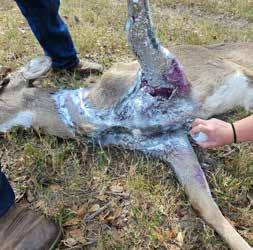
changes from Dr. Jekyll into Mr. Hyde .
All bucks’ testosterone levels will nearly peak within 3 + weeks of shedding velvet, so be very careful, especially with bottle fed bucks.
There are products available to calm your deer, and especially bucks during the rut, so that the need to cut antlers is greatly reduced. However, it is important to understand which of these products may also result in an unwanted side effect such as loss reproductive capabilities that year. The very best of these which I have found that does not interfere with reproductive status, is PeaceMaker by Head Gear, LLC. This product may be used on any deer to calm them.
Other manufacturers have products which will also reduce aggression, fighting, and thereby eliminate the need to cut a buck’s antlers. Some of these products cause a hormone change in bucks causing them to drop or shed their antlers usually within 2-3 weeks. A word of caution, don’t give it to bucks you intend on using as breeders that season.
Finally, the same hormone changes in testosterone levels that cause a buck to rub velvet, become aggressive, and trigger breeding, also result in them to loose or shed their antlers regardless of the size remaining on their head.
Whatever decision you make, to cut or not to cut, please stay safe and I hope that your animals are safe as well.
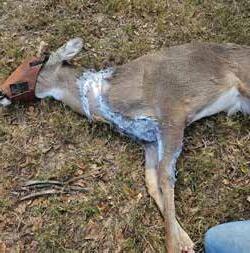

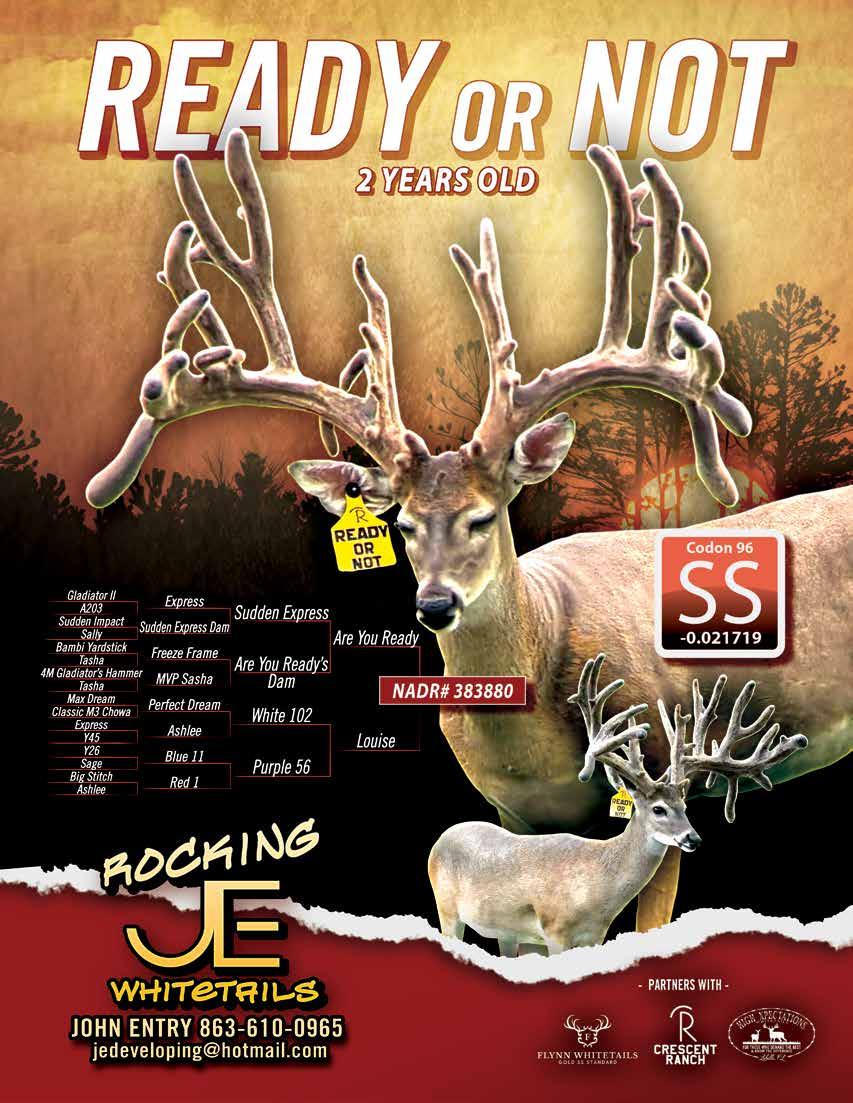

Welcome to our SeTDA members Business card page. This is a way for members, both old and new, to reach out to each other for your services or to buy and sell deer.
If interested in getting into future business card pages, send your Farm or Business Cards to; info@southeasttrophydeerassociation.com.
Business cards will be rotated quarterly, if your card isn’t in this issue it will likely be in next quarters magazine. All cards can be viewed at https://www.southeasttrophydeerassociation.com/page-18108.
Thank You,
SeTDA BOD’s



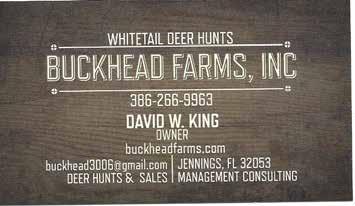
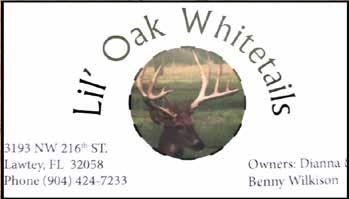



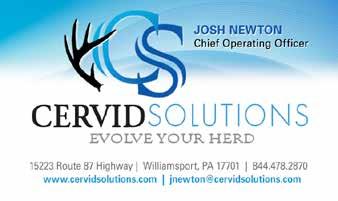





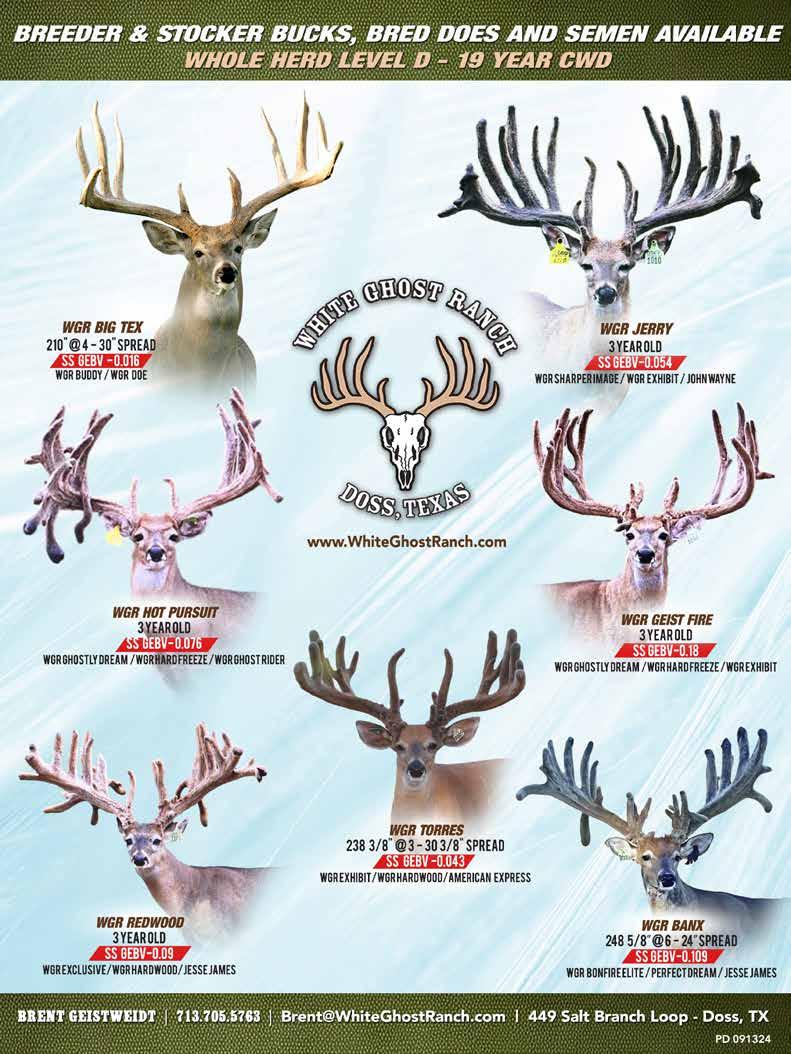
• 1 Tbsp. olive oil
• 1 yellow onion, diced
• 2 green bell peppers, diced
• 1 lb. ground venison
• 4–5 garlic cloves, minced
• 2 Tbsp. chili powder
• 1 Tbsp. cumin
• 1 tsp. paprika
• ½ tsp. cinnamon (optional)
• 1 and ½ tsp. salt
• ½ tsp. pepper
• 3 Tbsp. tomato paste
• 1 tsp. Worchestershire sauce
• 1 orange, juiced
• 1 lime, juiced
• 1 and 1/2 cups venison or beef stock*
• 28 oz. diced tomatoes, drained
• 15 oz. black beans, drained and rinsed
• 15 oz. kidney beans, drained and rinsed
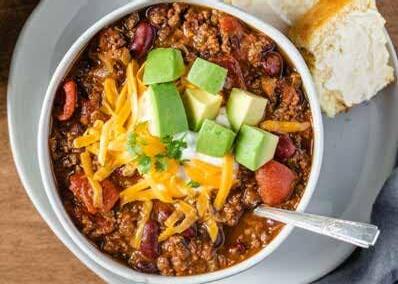
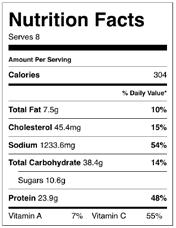
1. Begin by heating the olive oil in a large pot over medium heat.
2. Add the onion and peppers and cook until the onions start to brown on the edges, about 5-7 minutes. Then, add the venison and brown.

3. Once the venison is browned add the garlic, chili powder, cumin, paprika, cinnamon, salt, and pepper. Saute for 1-2 minutes and then add the tomato paste. Cook for an additional minute, incorporating the tomato paste.
4. Then, deglaze the pot with Worchestershire sauce, orange juice, and lime juice. Scrape the bottom of the pot and add the stock, tomatoes, and beans.
5. Stir well and bring the chili to a boil. Once boiling, reduce the heat to low, cover partially with a lid and let the pot simmer for at least 30 minutes but up to all day. If you’re cooking longer than an hour, be sure to cover the chili fully with a lid so all of the liquid doesn’t evaporate.
6. Ladle up generous portions, top with your favorite chili toppings, and serve.
Have a great recipe to share? Email to deerassociations@gmail.com or mail to: Samantha Uchytil 19291 59th St NE, New London, MN 56273




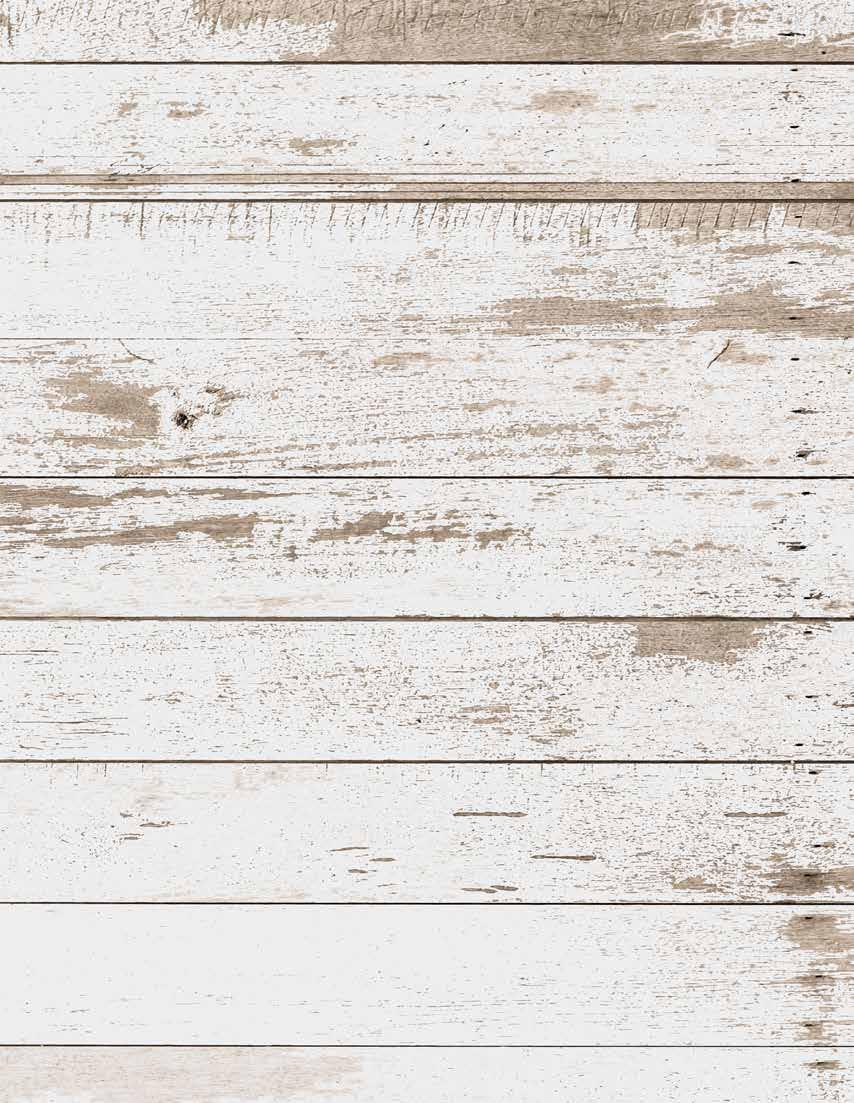
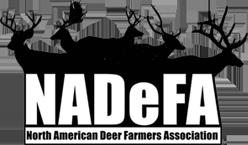

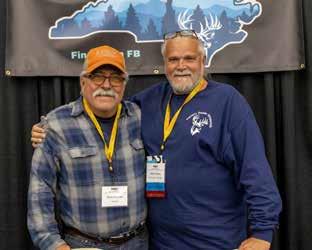


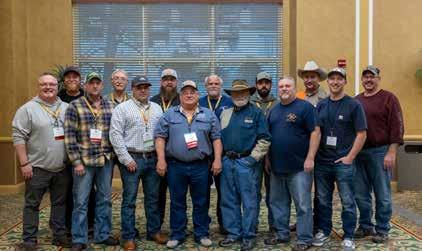




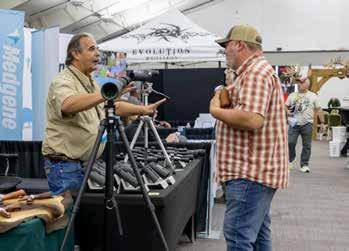
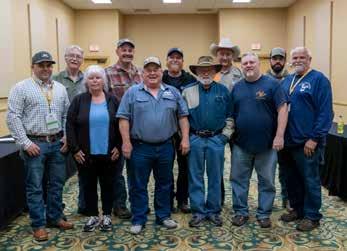
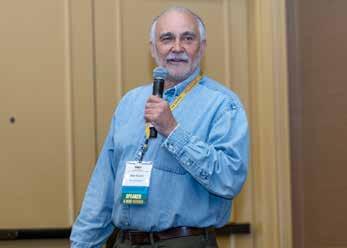
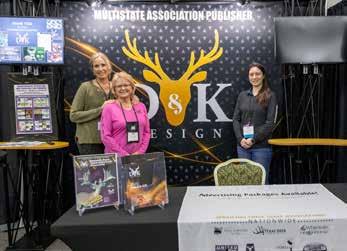
• Alabama Deer Association
• Illinois Deer Farmers
• Indiana Deer And Elk Farmers Association
• Iowa Whitetail Deer Association
• Kansas Elk and Deer Association
• Kentucky Alternative Livestock Association
44 ISSUES FOR 1 YR
Reaching out to over 2500 members
(11 Publications x 4 quarters)
17 State Associations - Approx. 2500 readers
$189 / Issue ($8316. / Yr) ~ Full Page
$107 / Issue ($4708. / Yr.) ~ Half Page
(55-59% Discount off single ad placement)
4 ISSUES FOR 1 YR.
(1 Publication x 4 quarters)
$252/ Issue ($1008. / Yr) ~ Full Page
• Minnesota Deer Association
• Missouri Deer Association
• New York Deer and Elk Farmers Association
• North Dakota Deer Ranchers
• Pennsylvania Deer Farmers Association
• South Dakota Deer & Elk Breeders
• Southeast Trophy Deer Association


• Texas Deer Association
• United Deer Farmers of Michigan
• West Virginia Deer Farmers Association
• Whitetail Deer Farmers of Ohio
• Whitetails of Louisiana
• Whitetails of Oklahoma
16 ISSUES FOR 1 YR.
(4 Publications of your choice x 4 quarters)
$220 / Issue ($3520. / Yr) ~ Full Page
$121 / Issue ($1936. / Yr.) ~ Half Page (48-54% Discount off single ad placement)

$137 / Issue ($548. / Yr.) ~ Half Page (40-48% Discount off single ad placement)

Single Issue In Any Of Our Eleven Quarterly Publications: Full Page: $420.00 1/2 Page: $263.00



Package Add On *
TEXAS DEER ASSOCIATION MAGAZINES
4 ISSUES FOR 1 YR. (Can be added to Buckaneer or Doe-Re-Mi package) Reaching out to over 800 TDA members
(3 Tracks Publications & 1 Auction Catalog)
$428 / Issue ($1712. / Yr) ~ Full Page
$267/ Issue ($1068. / Yr.) ~ Half Page
(55-59% Discount off single ad placement)
Single Issue In TDA Publications:
Two Page: $1500. One Page: $950 1/2 Page: $650





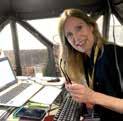
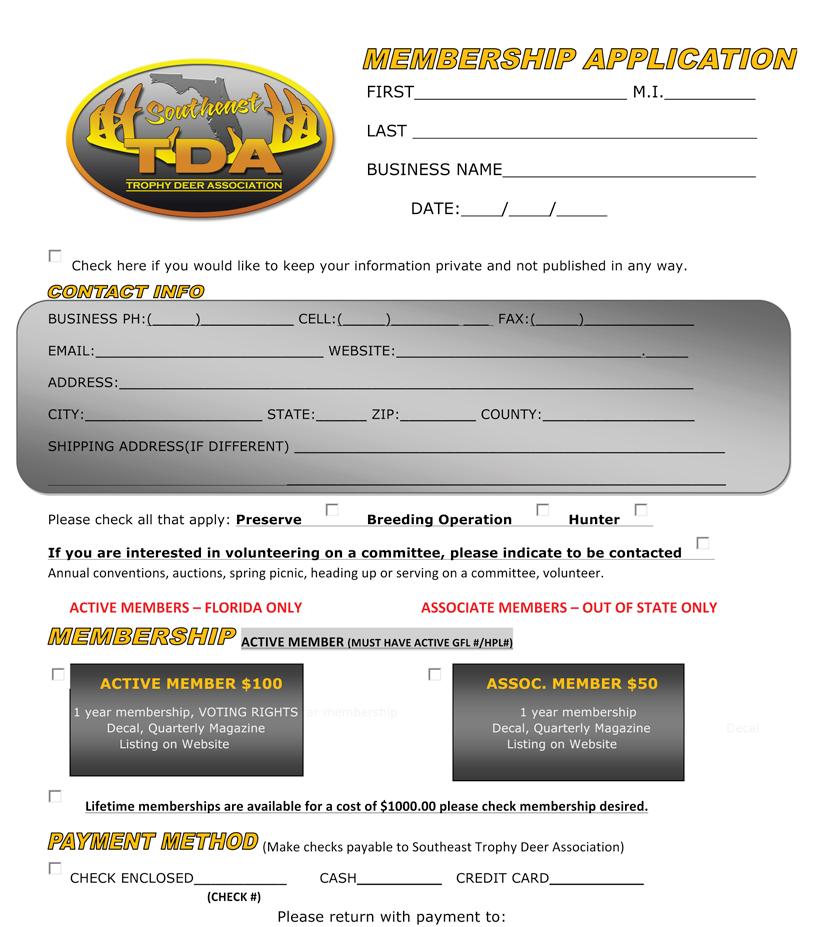
SOUTHEAST TROPHY DEER ASSOCIATION
Dr. Bill Leffler
PO Box 159
Morriston, FL 32668
